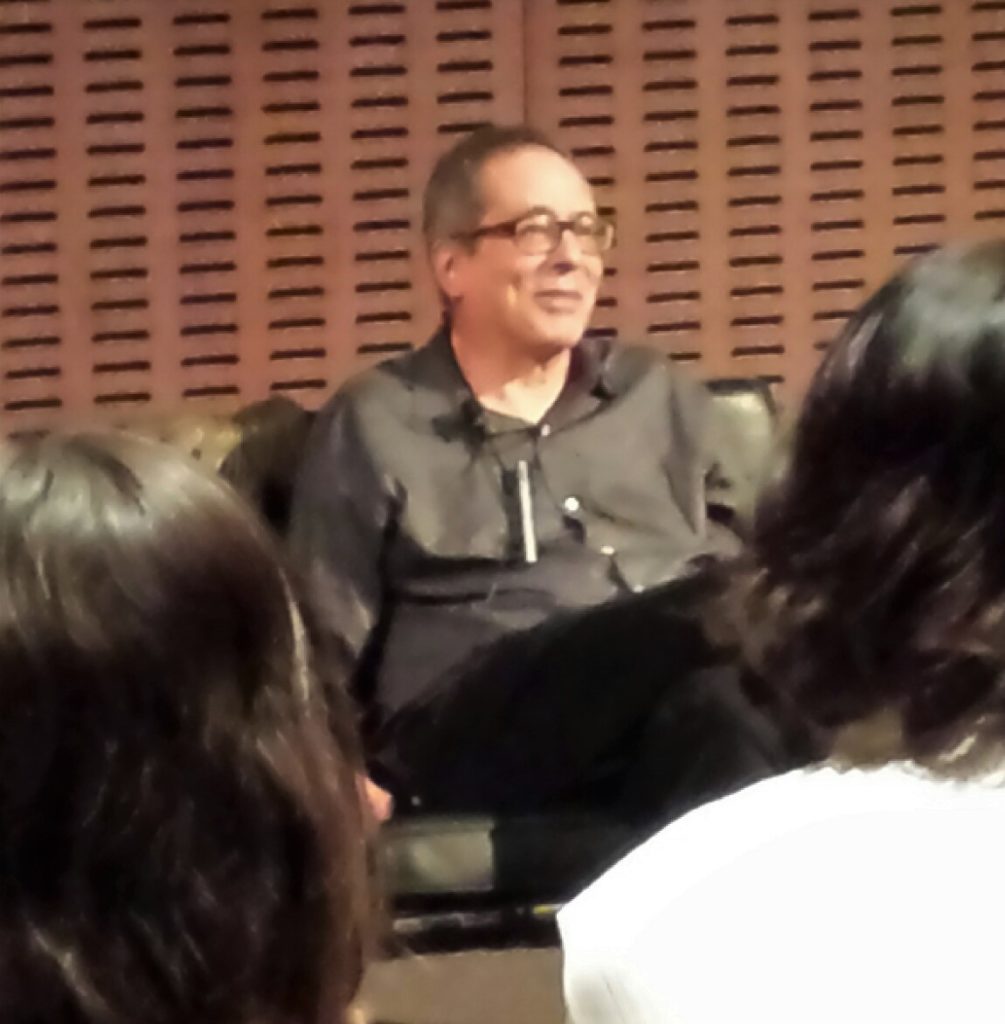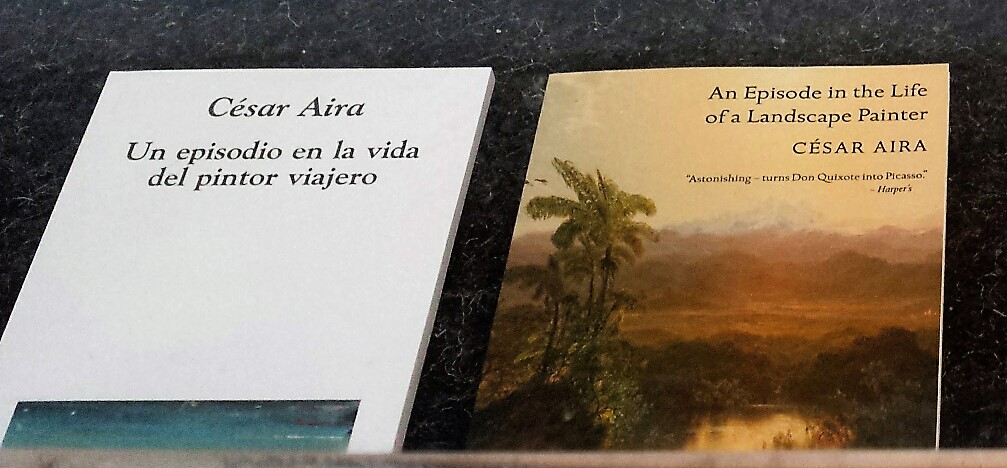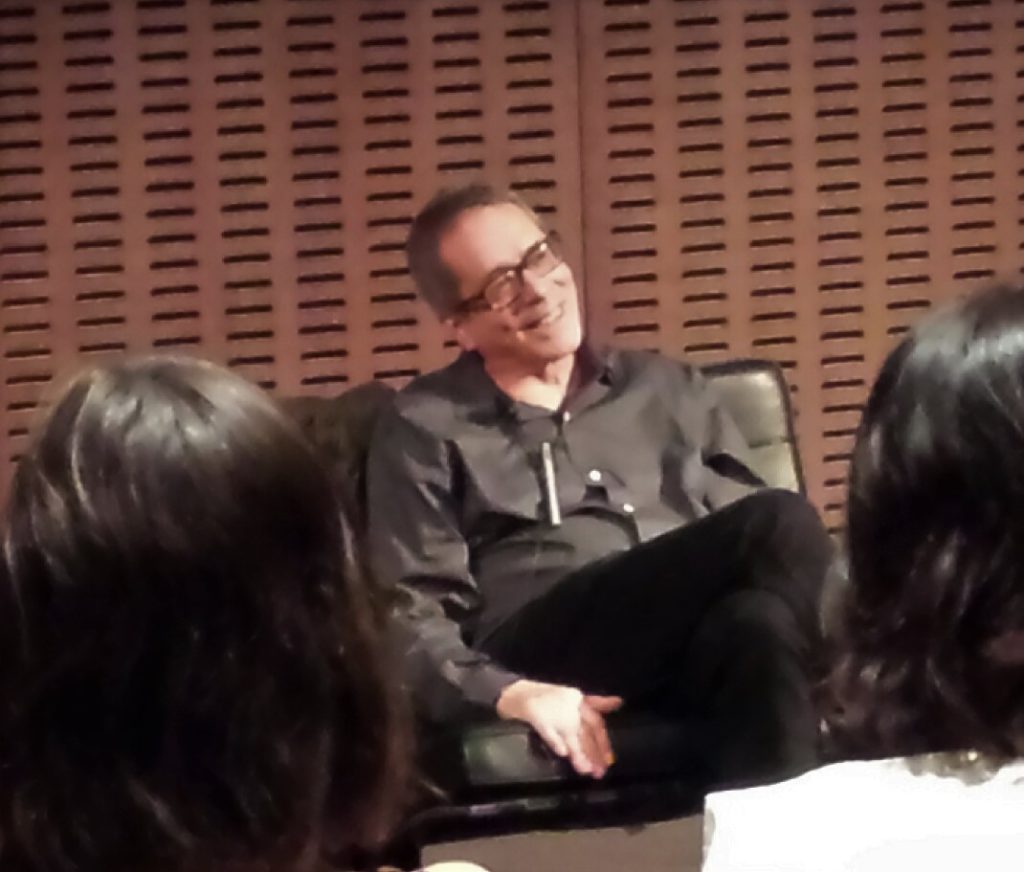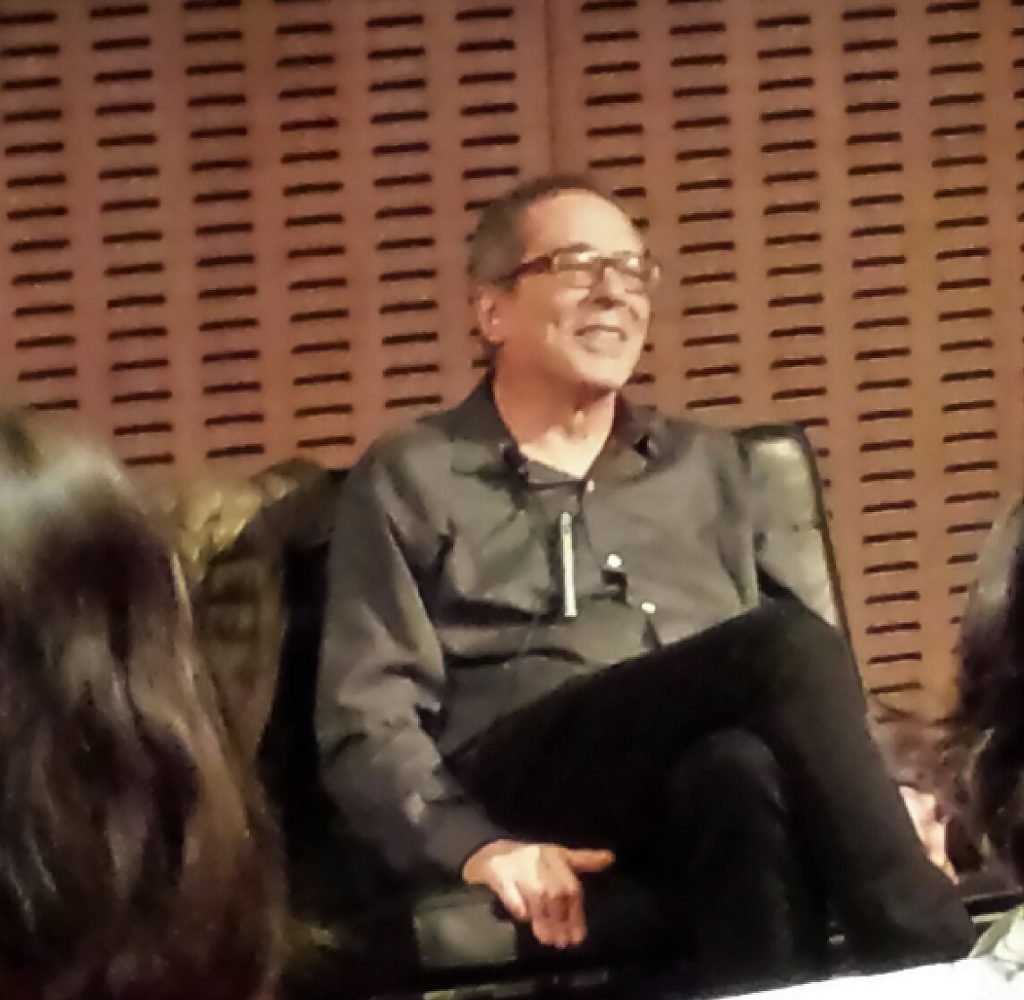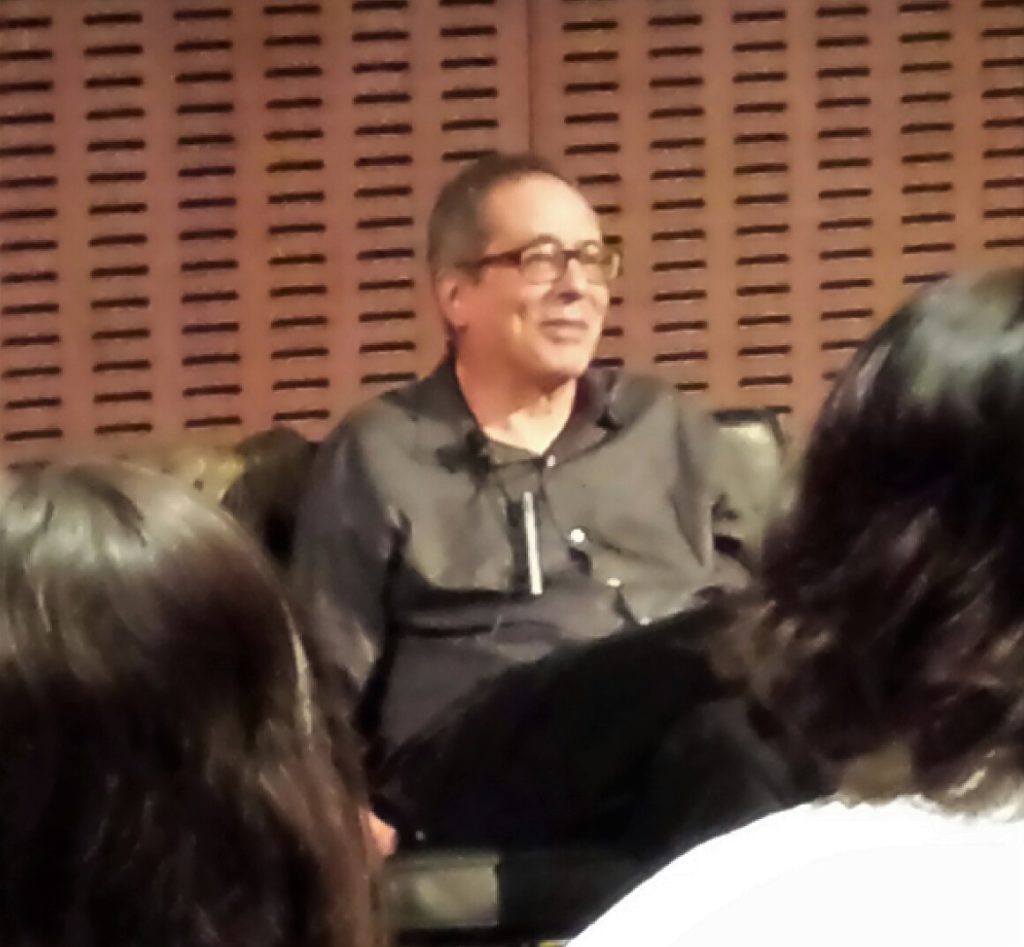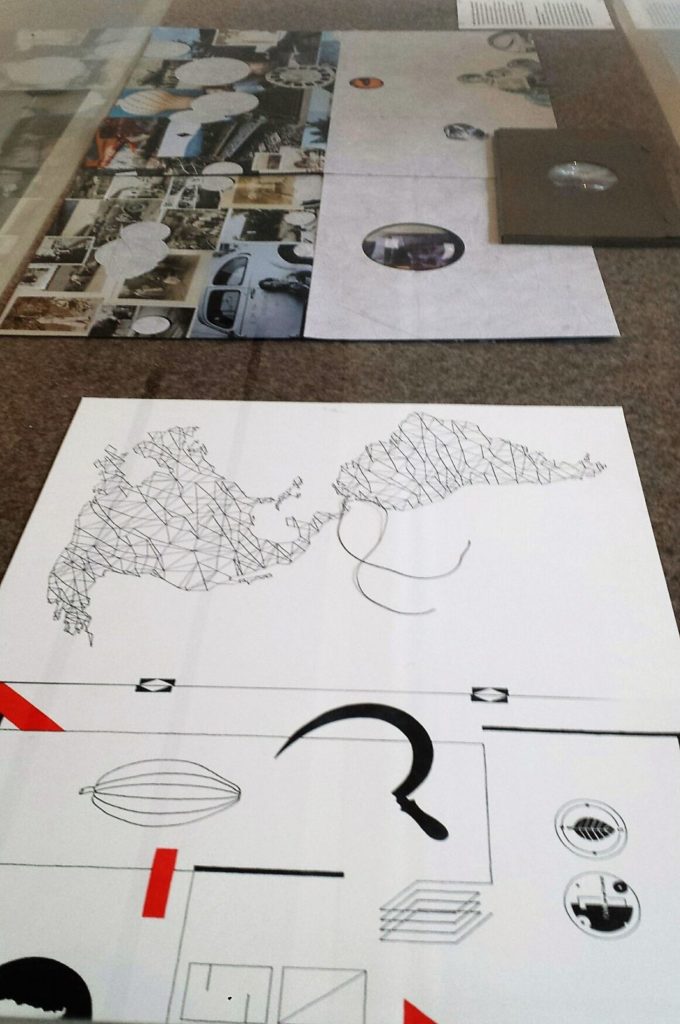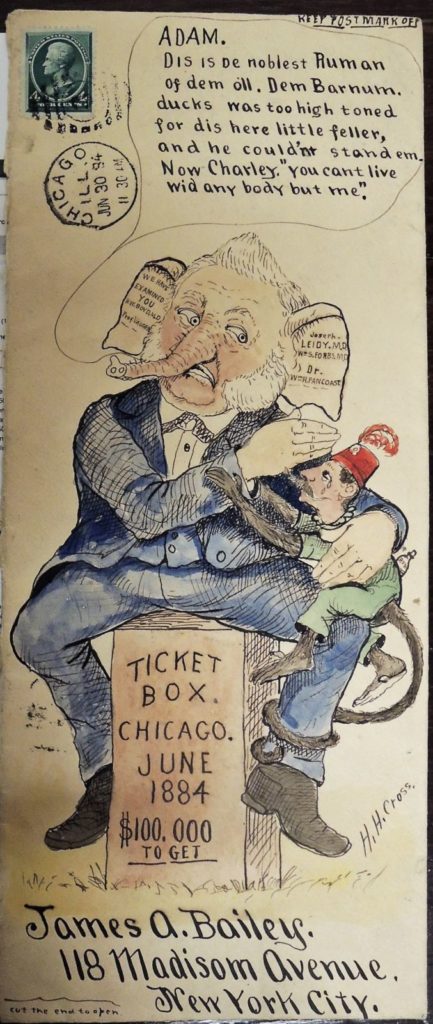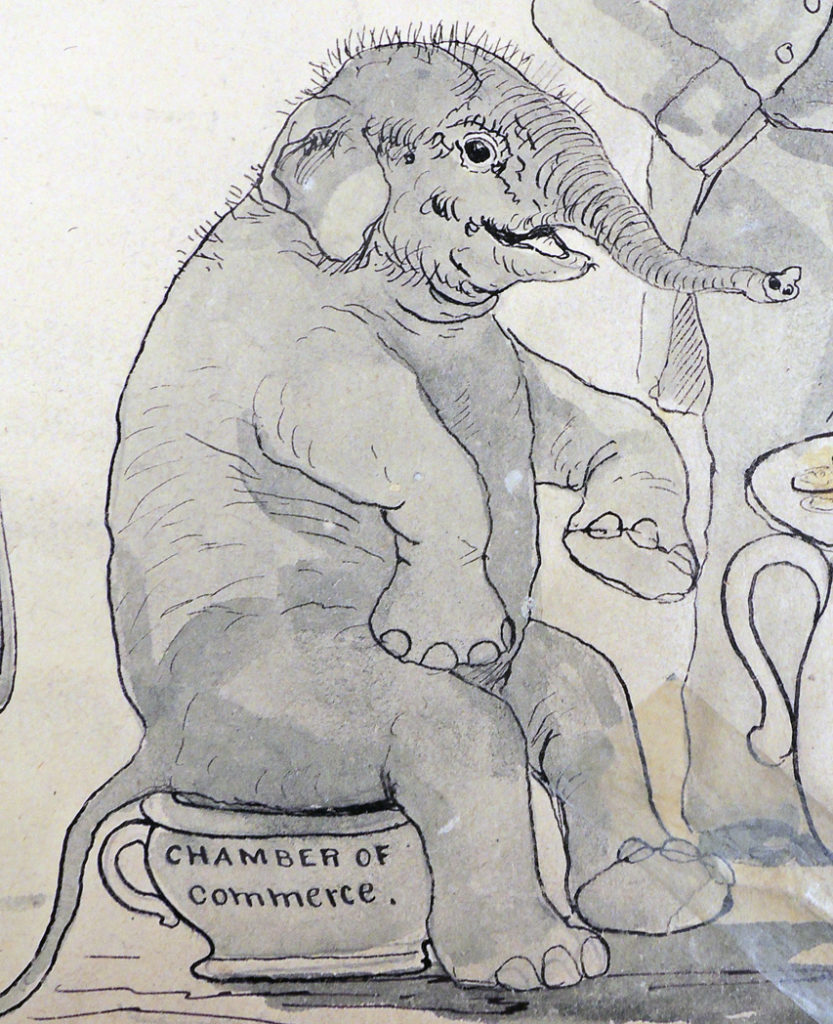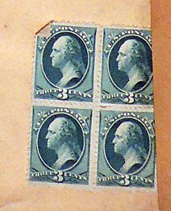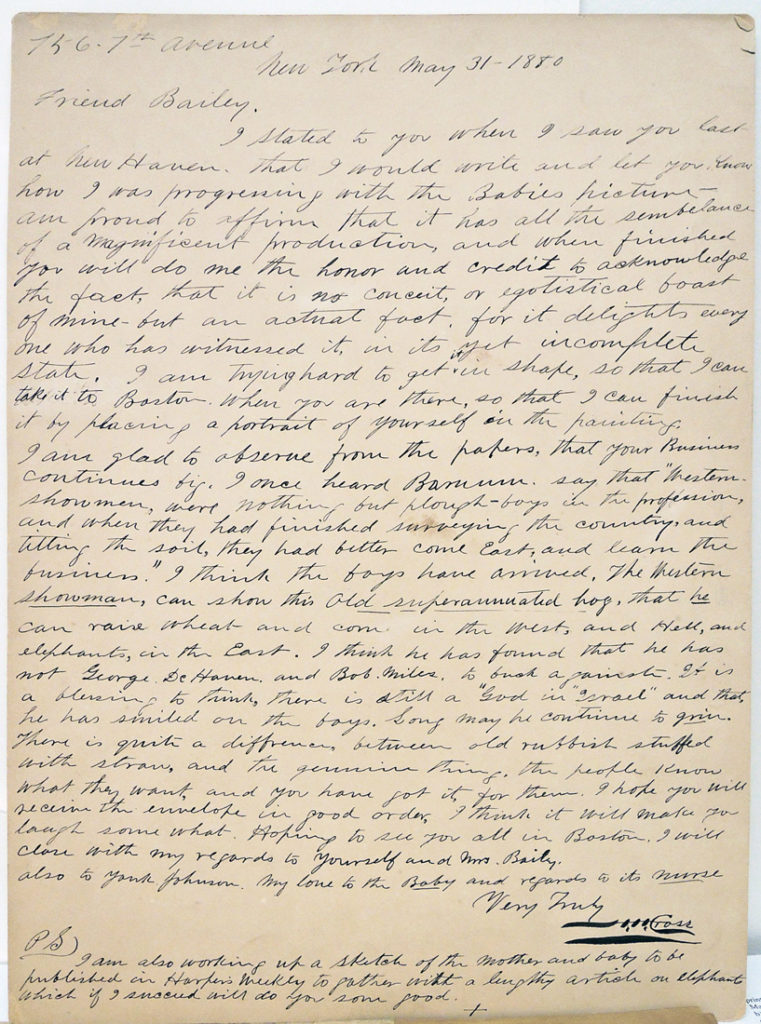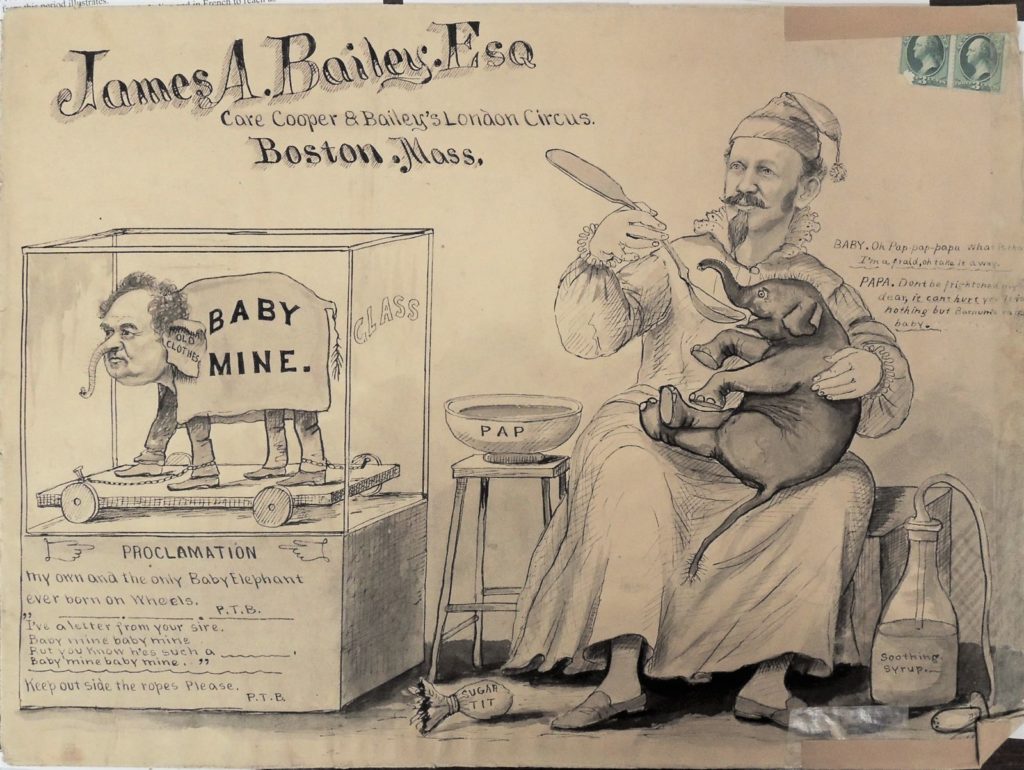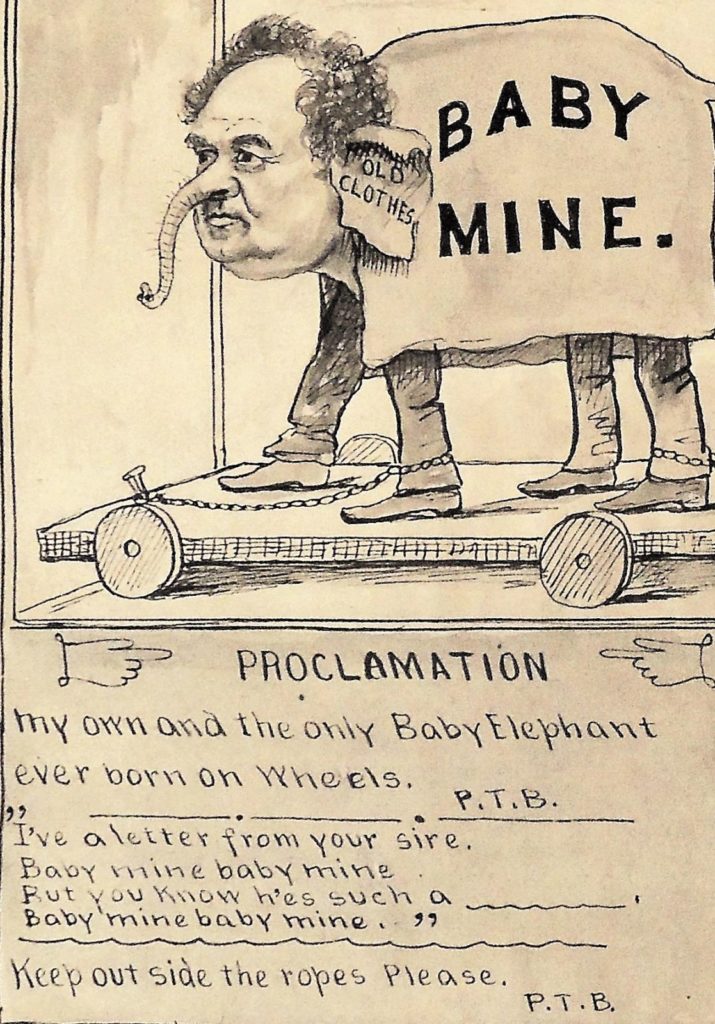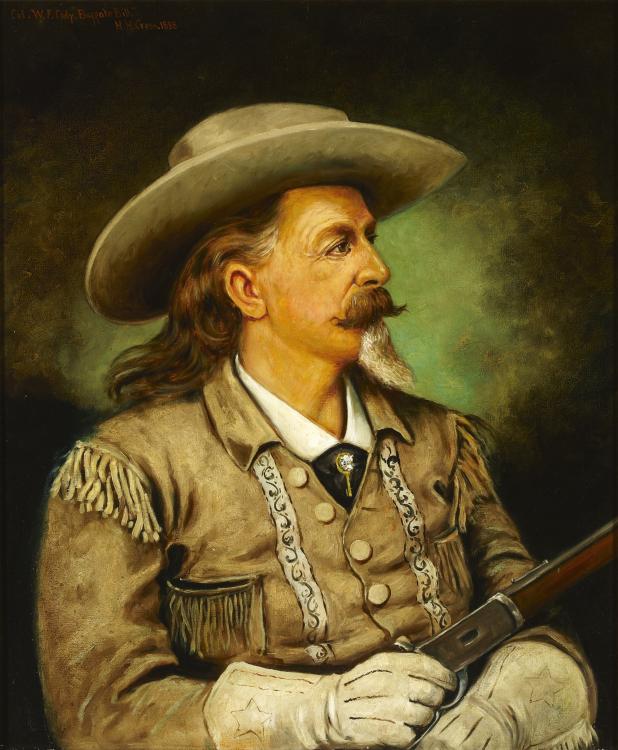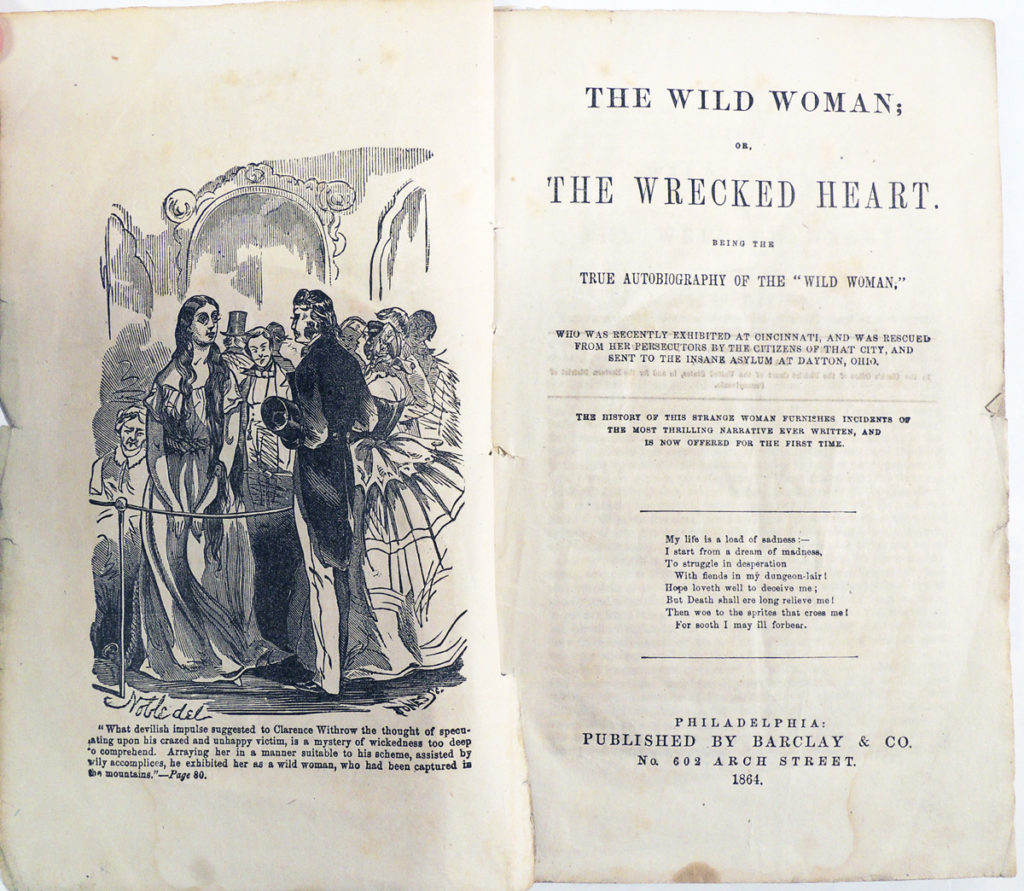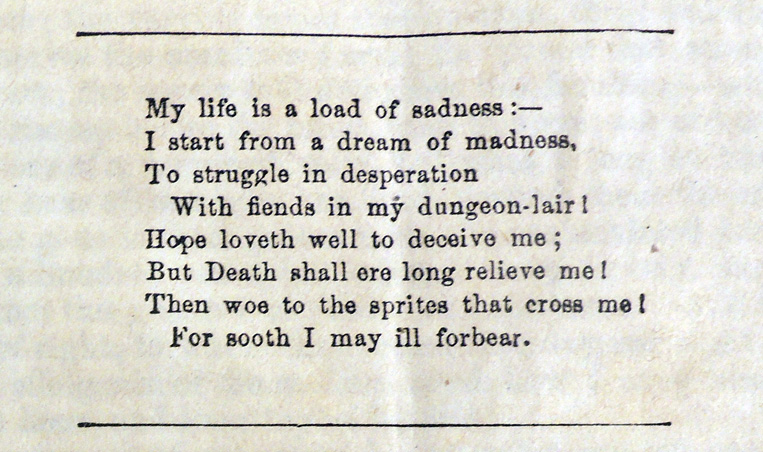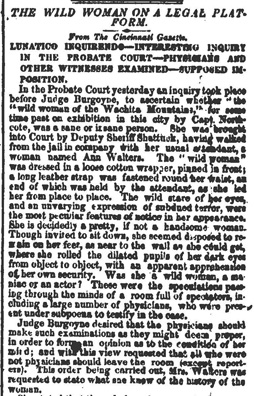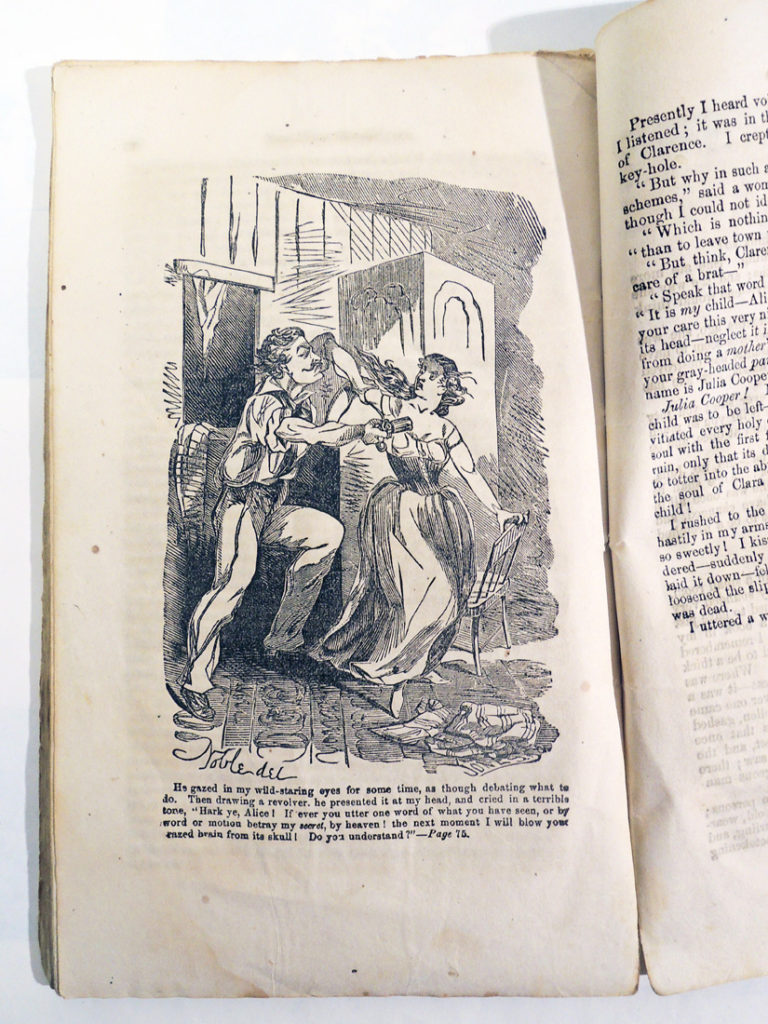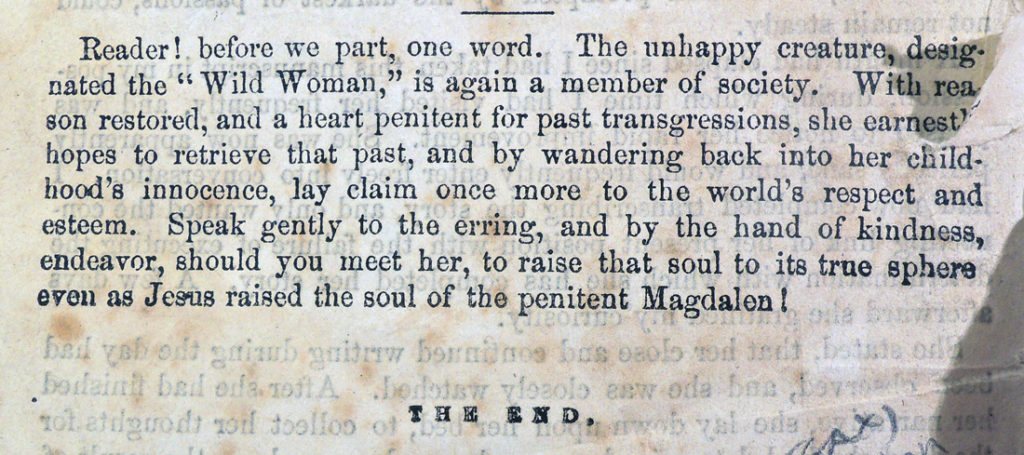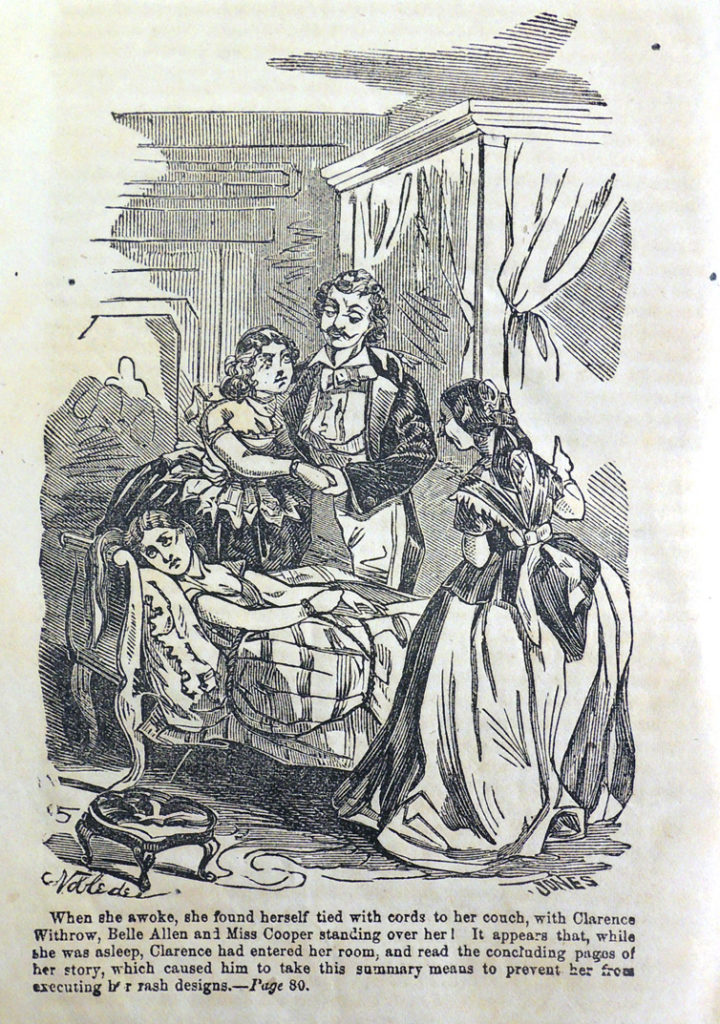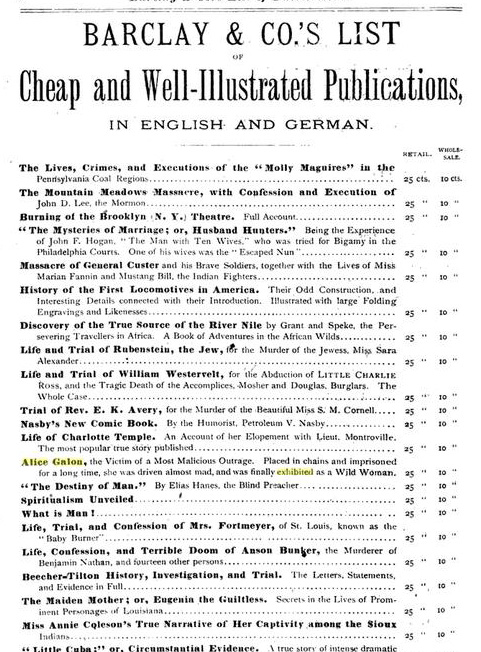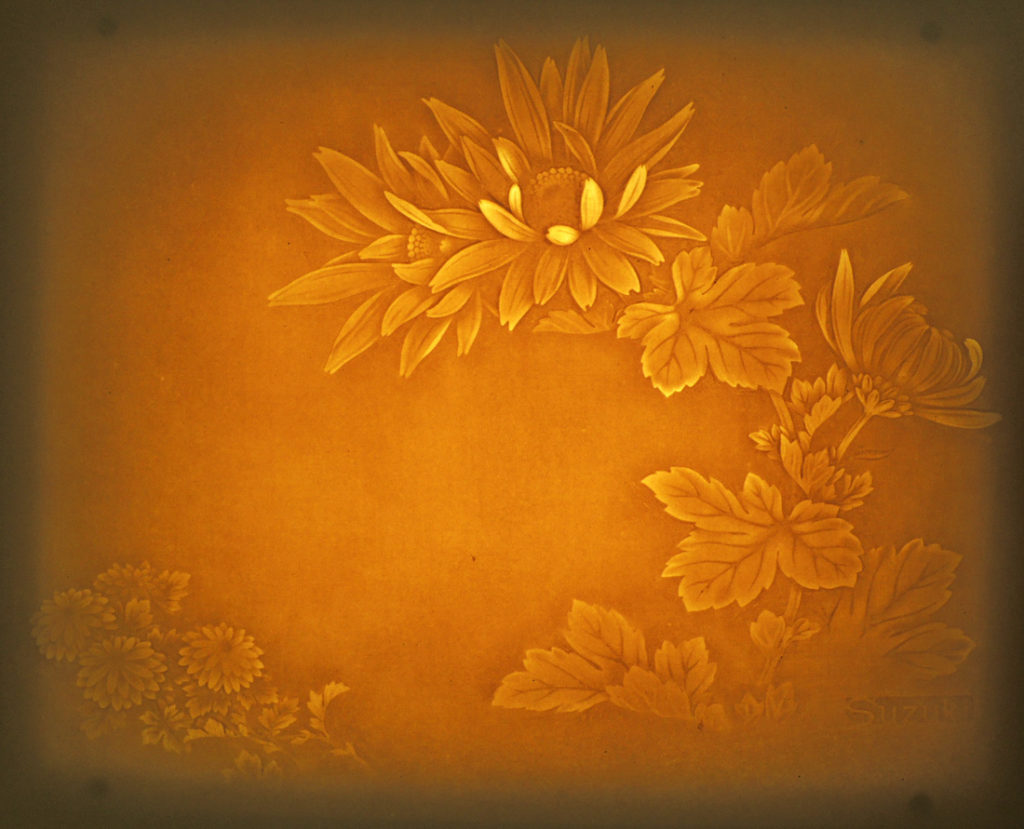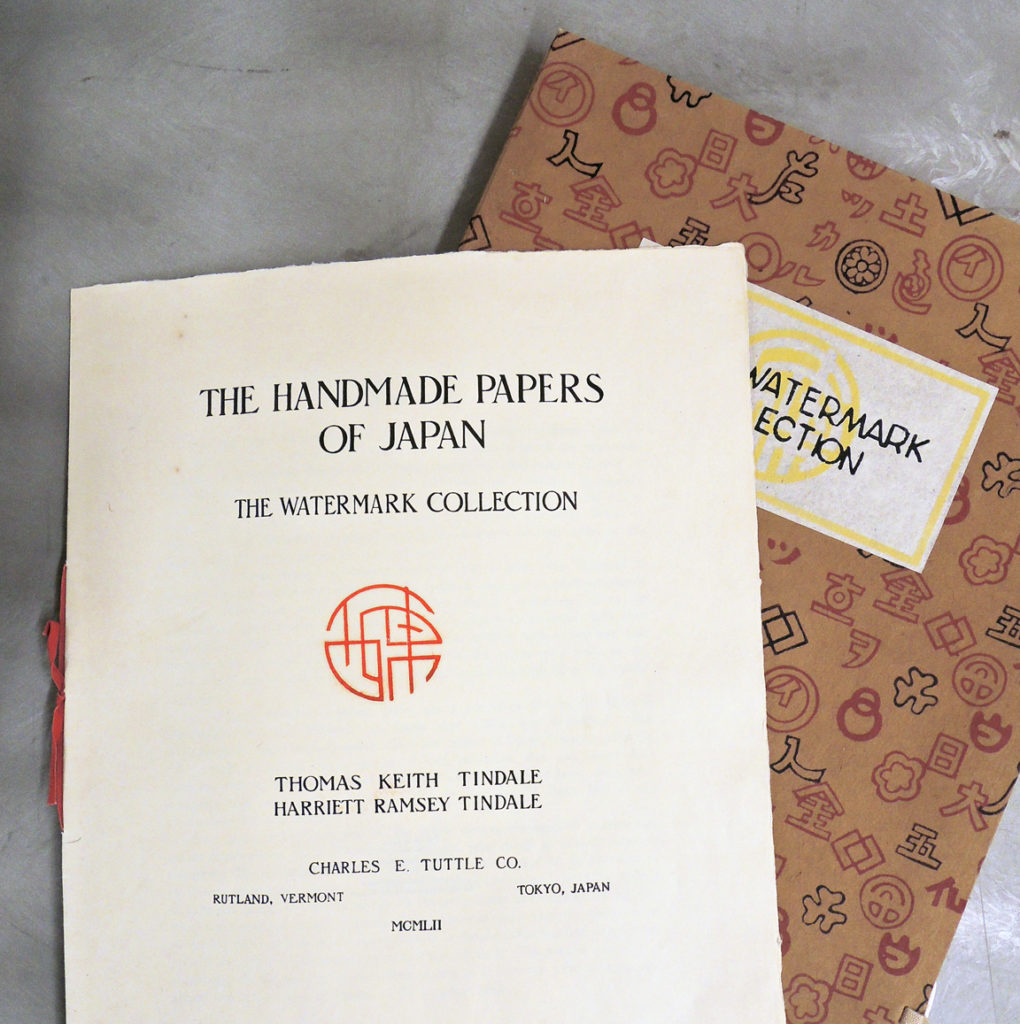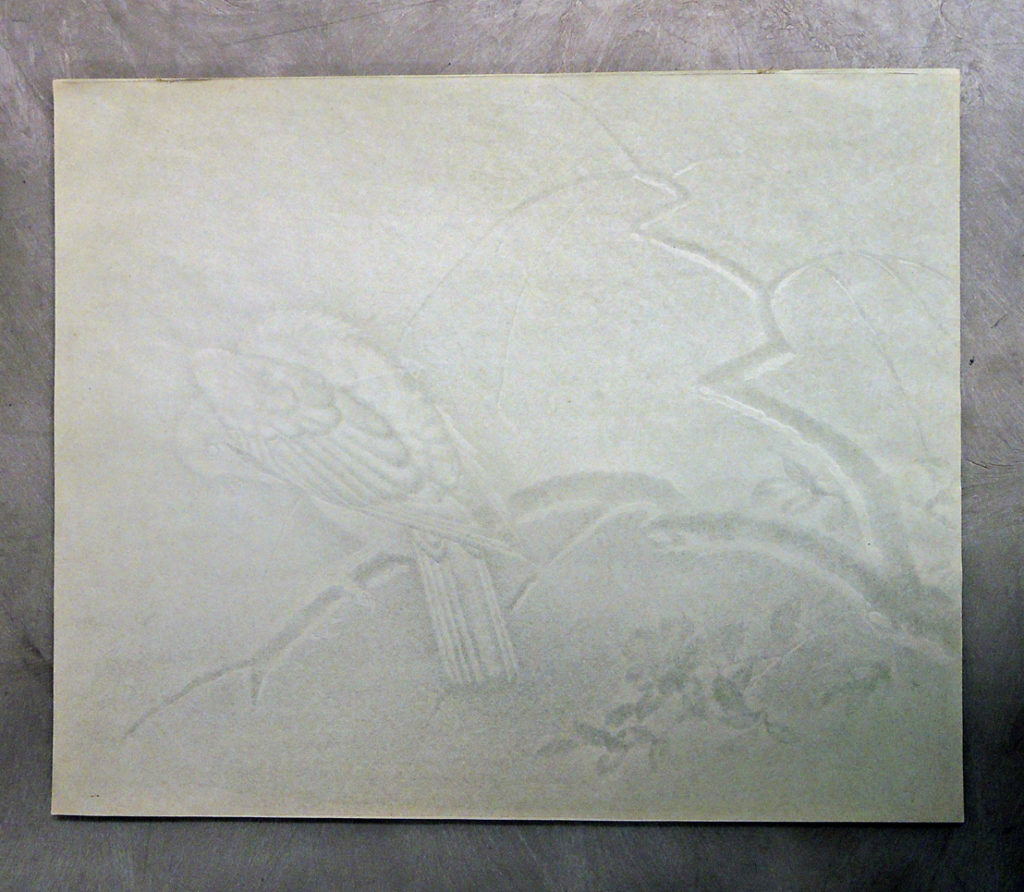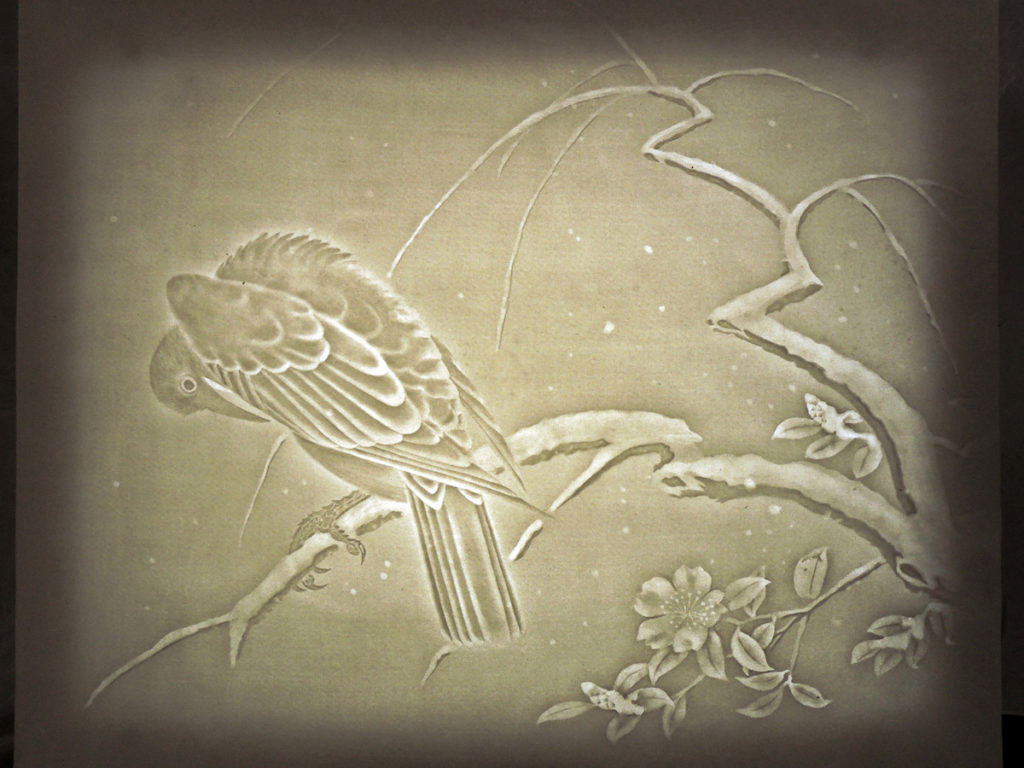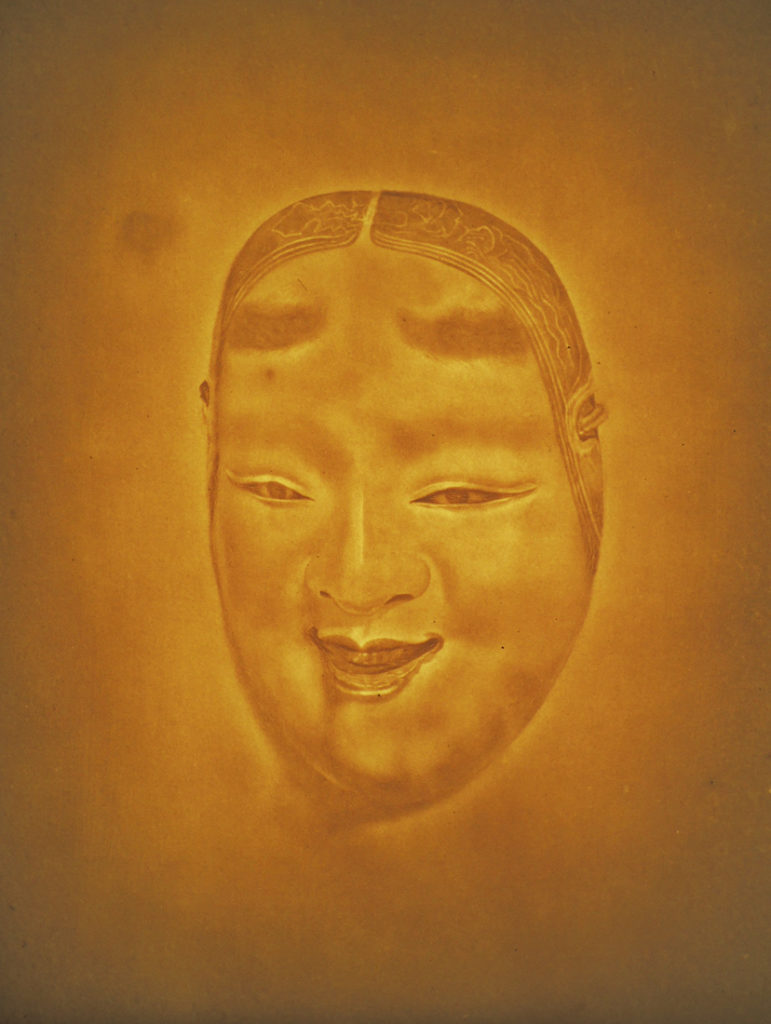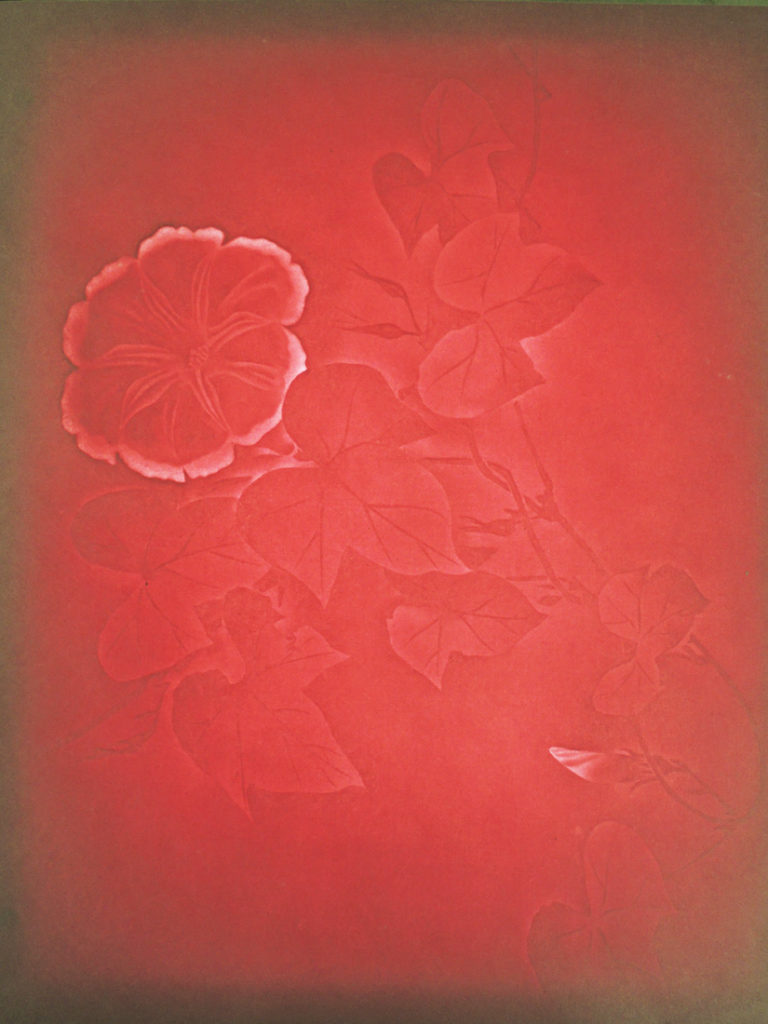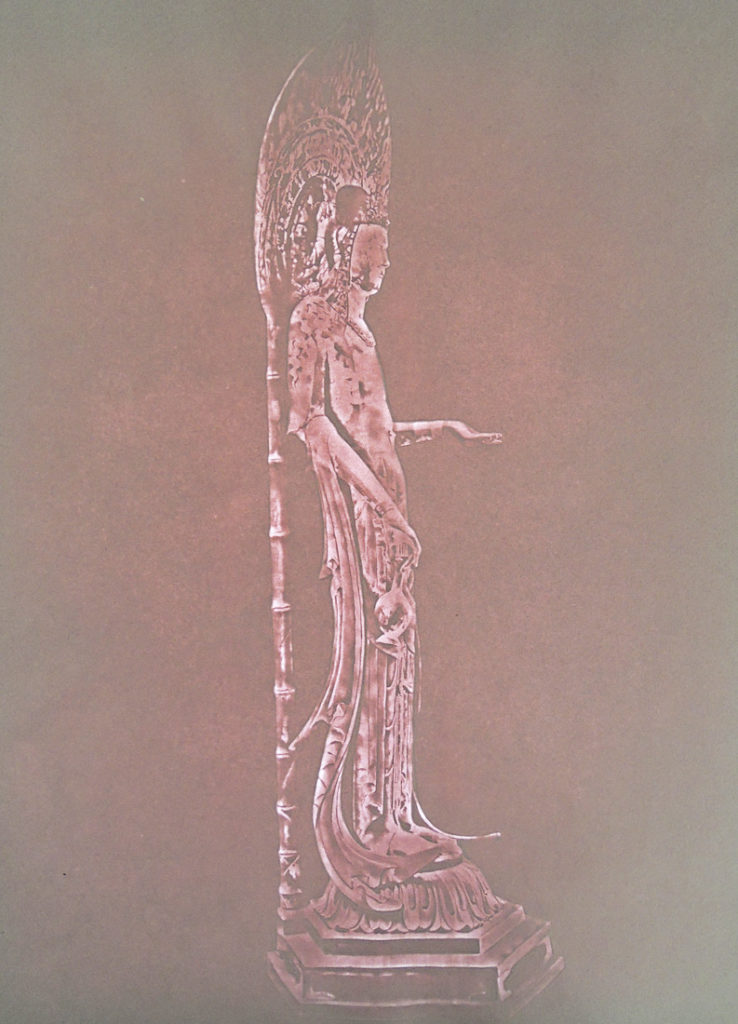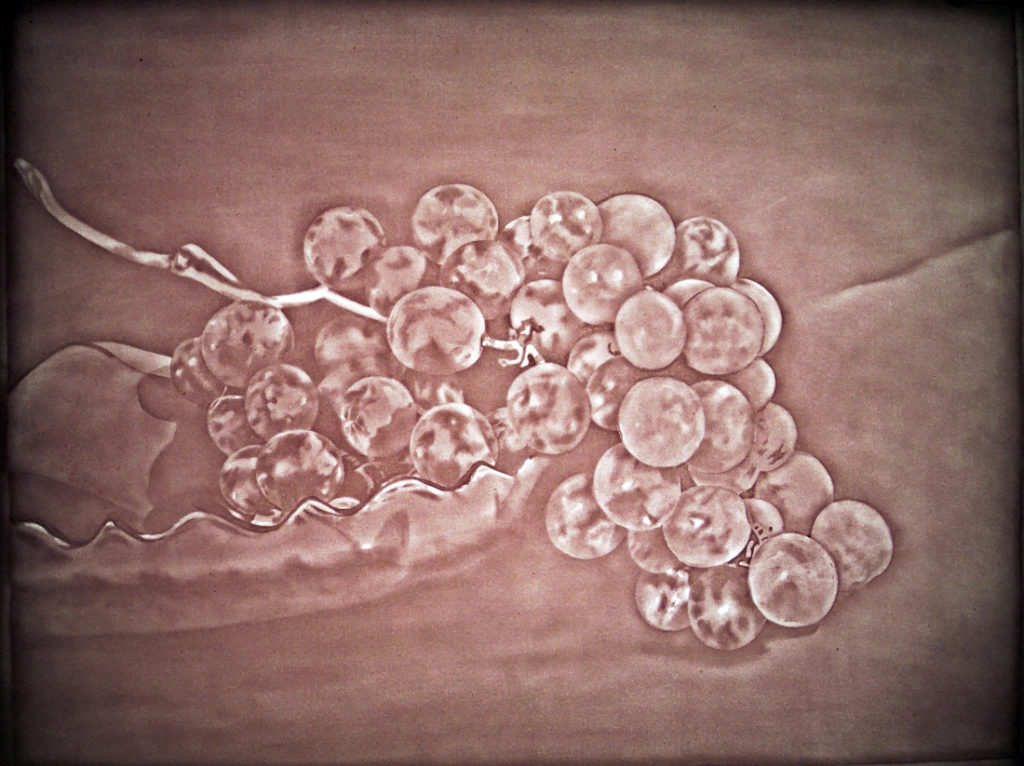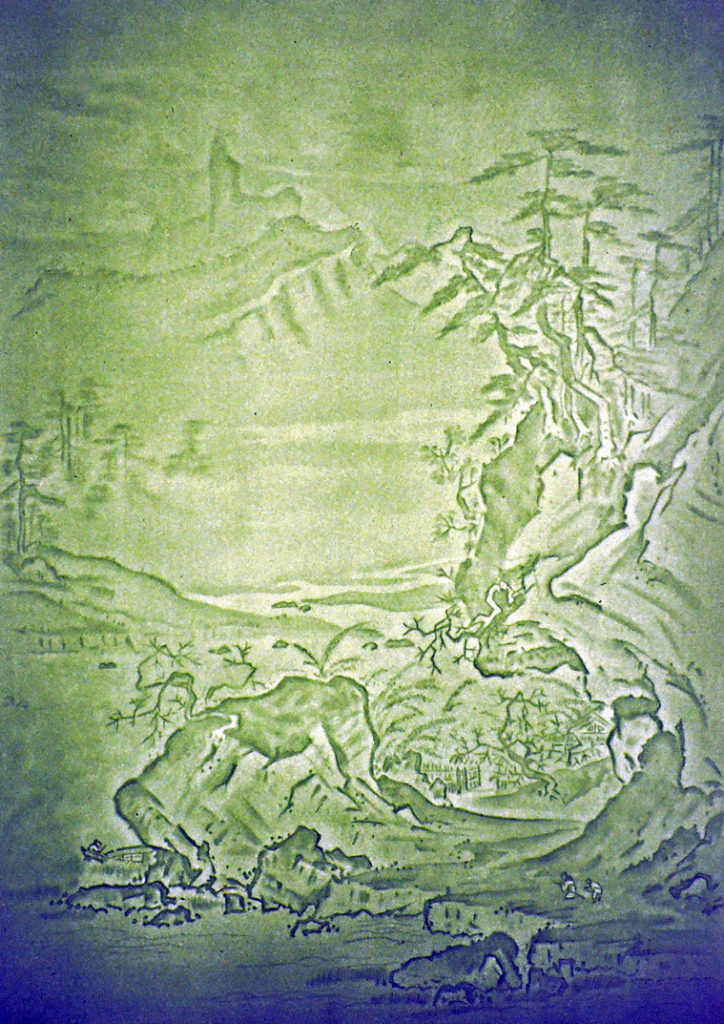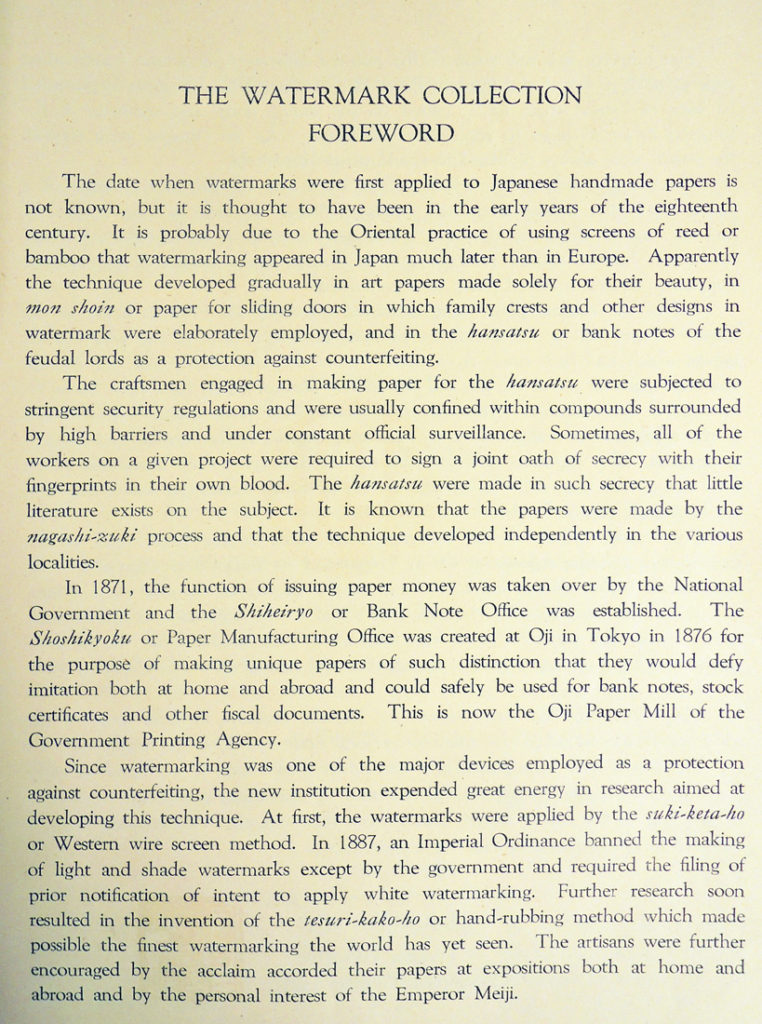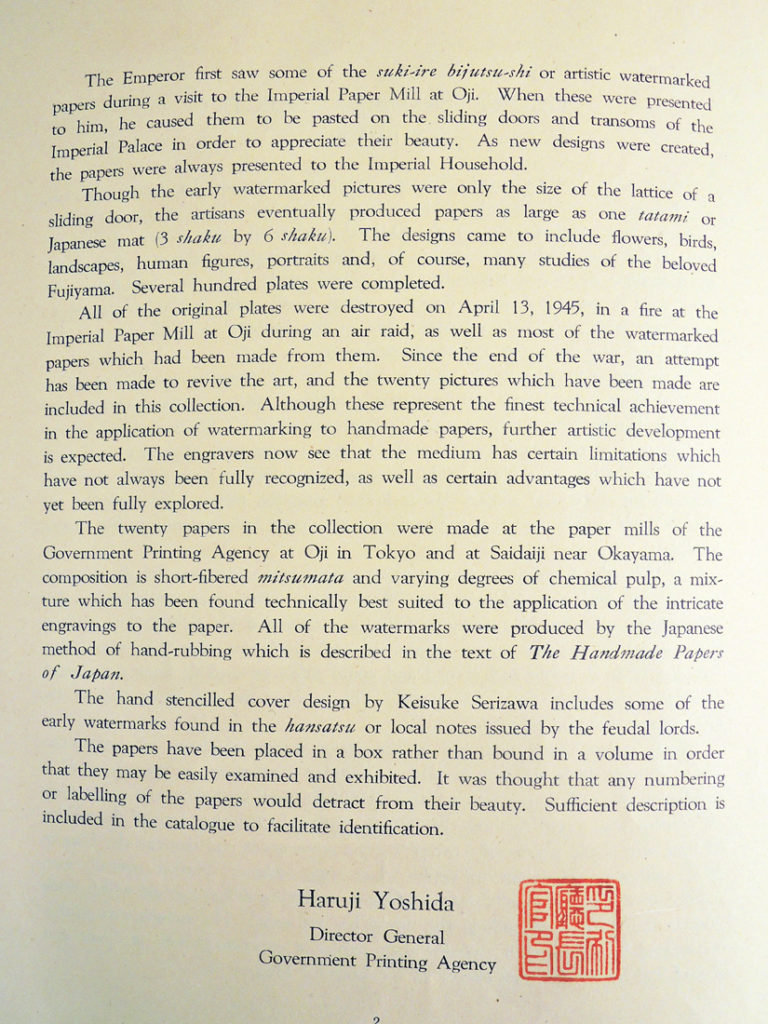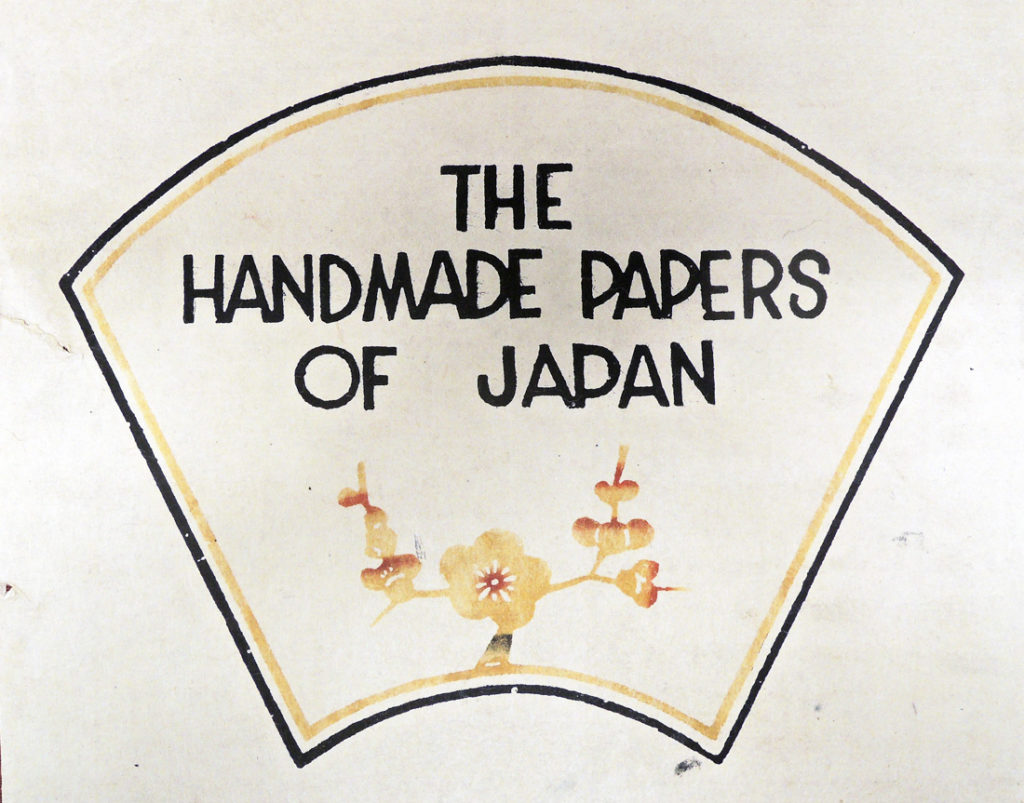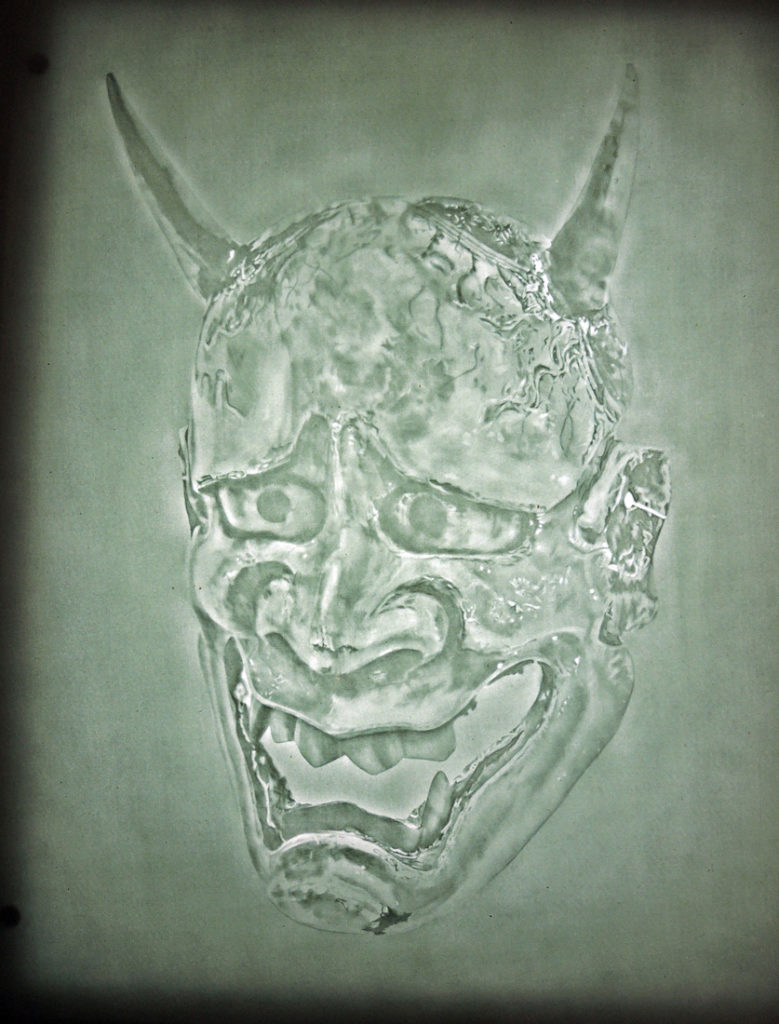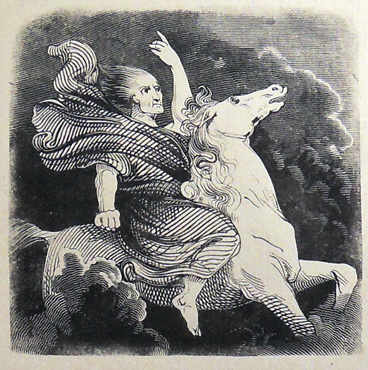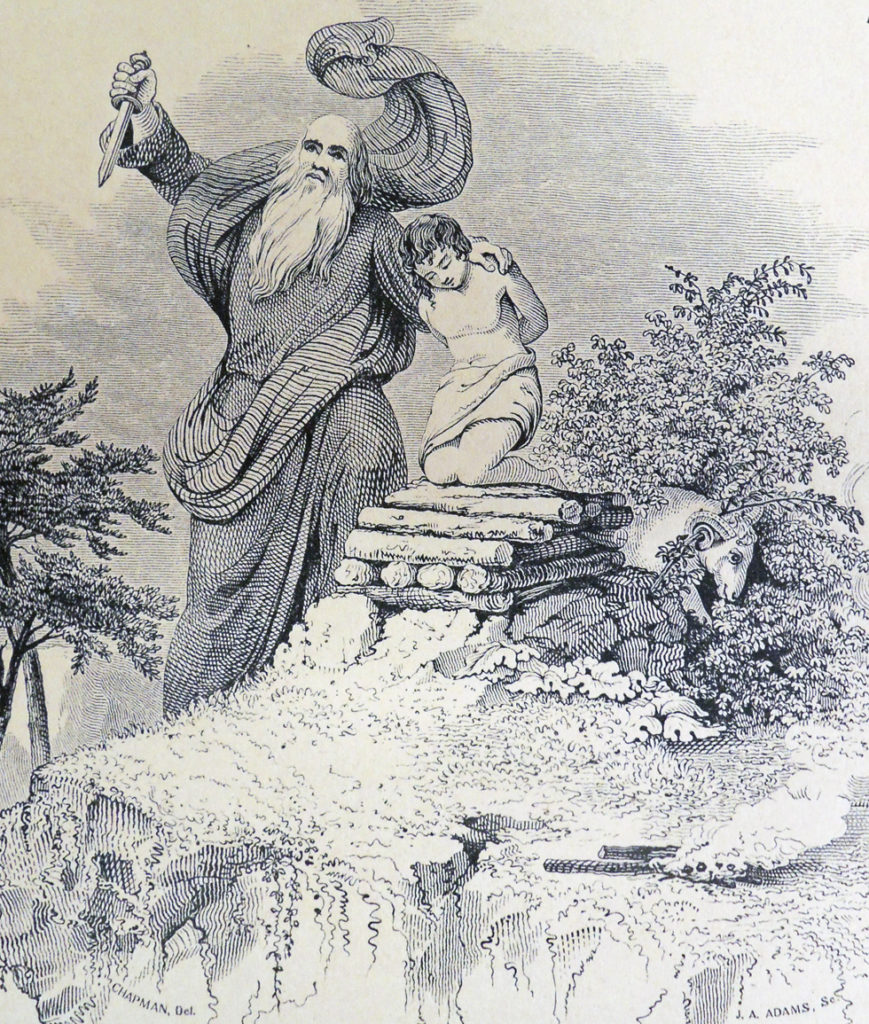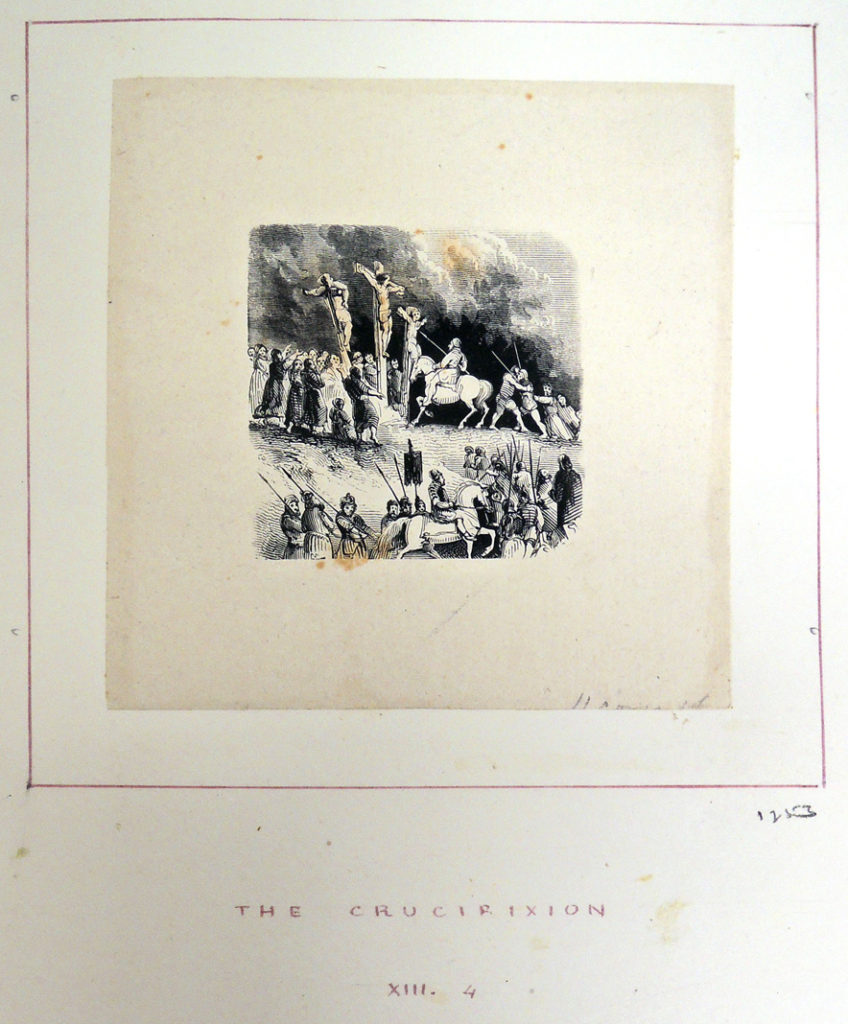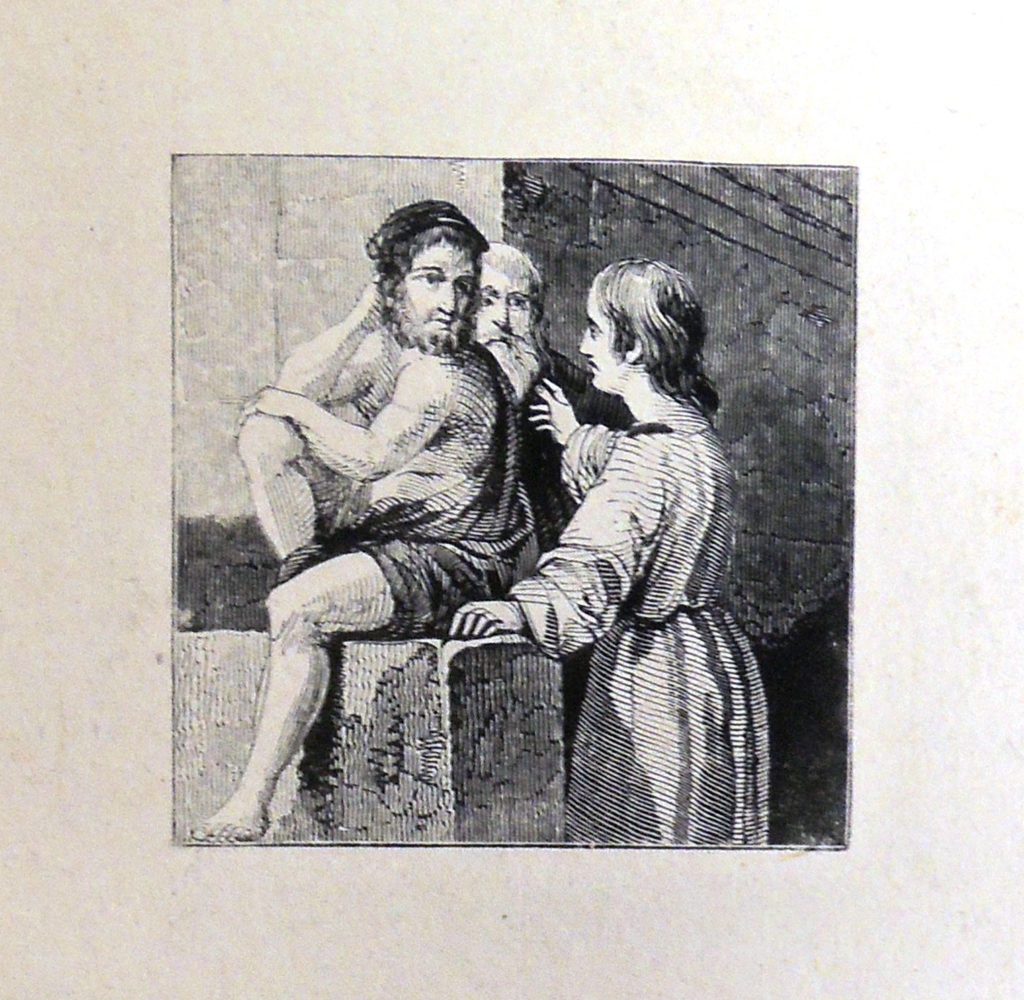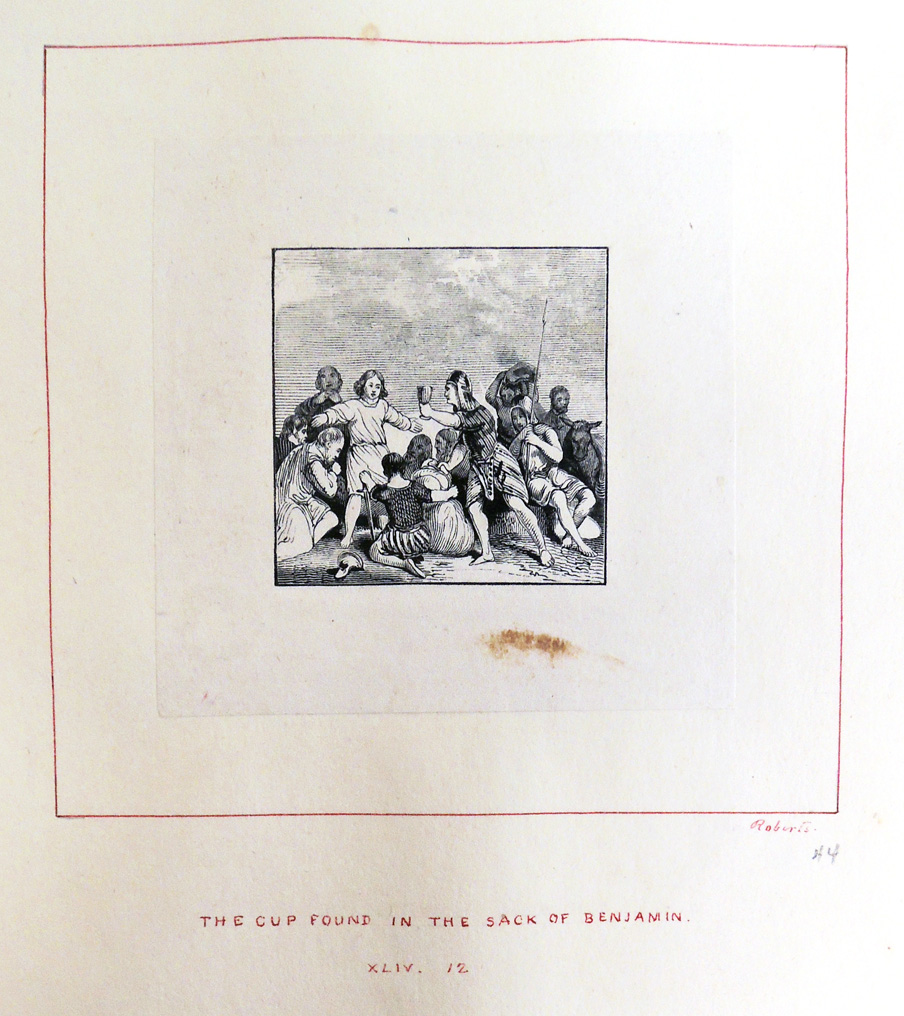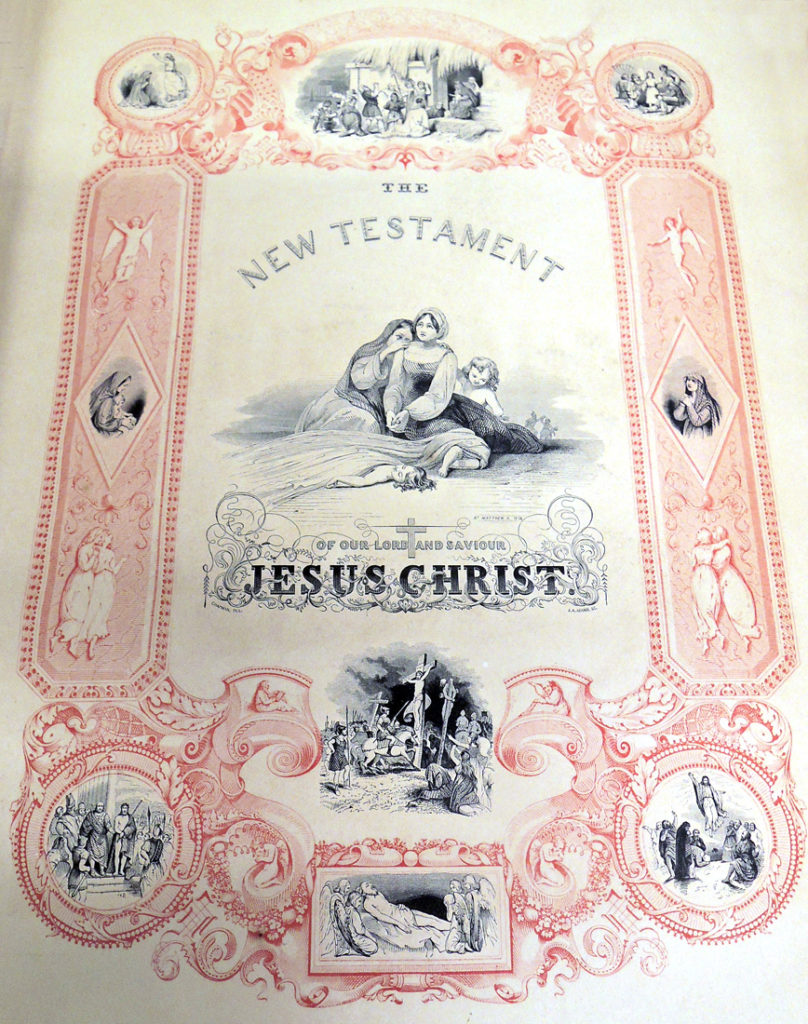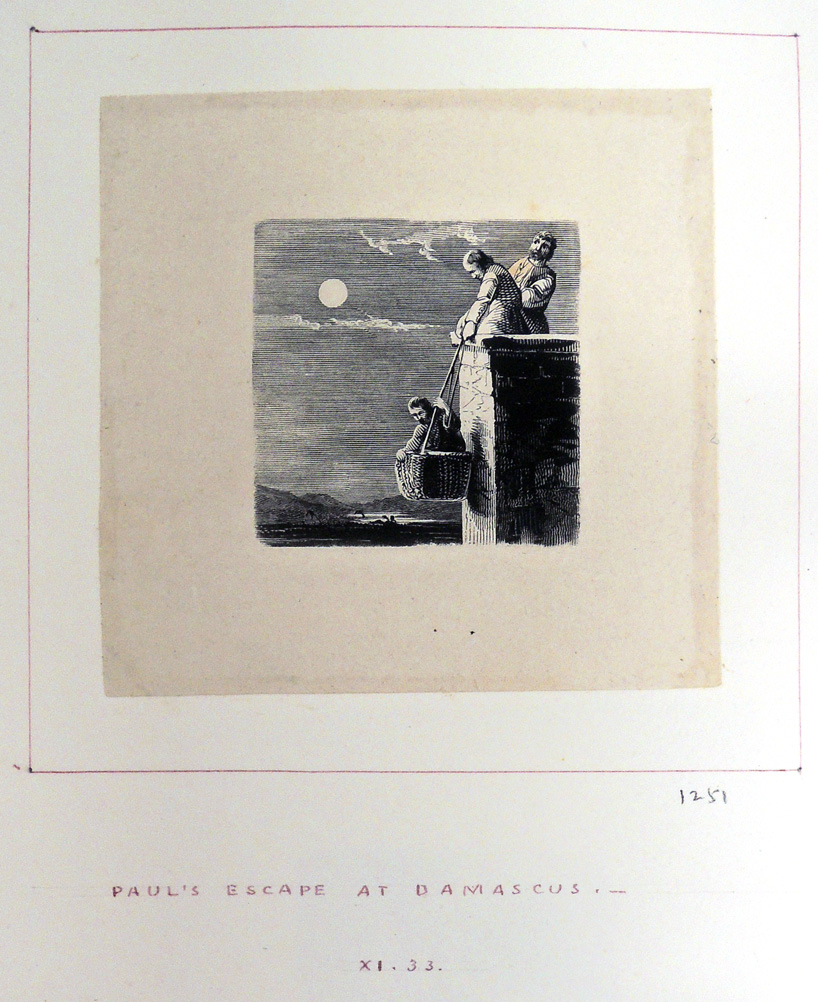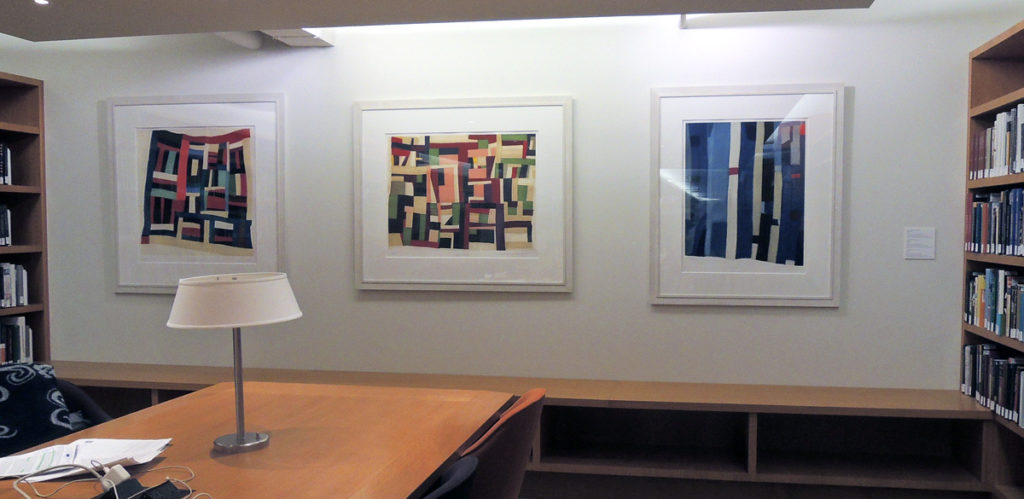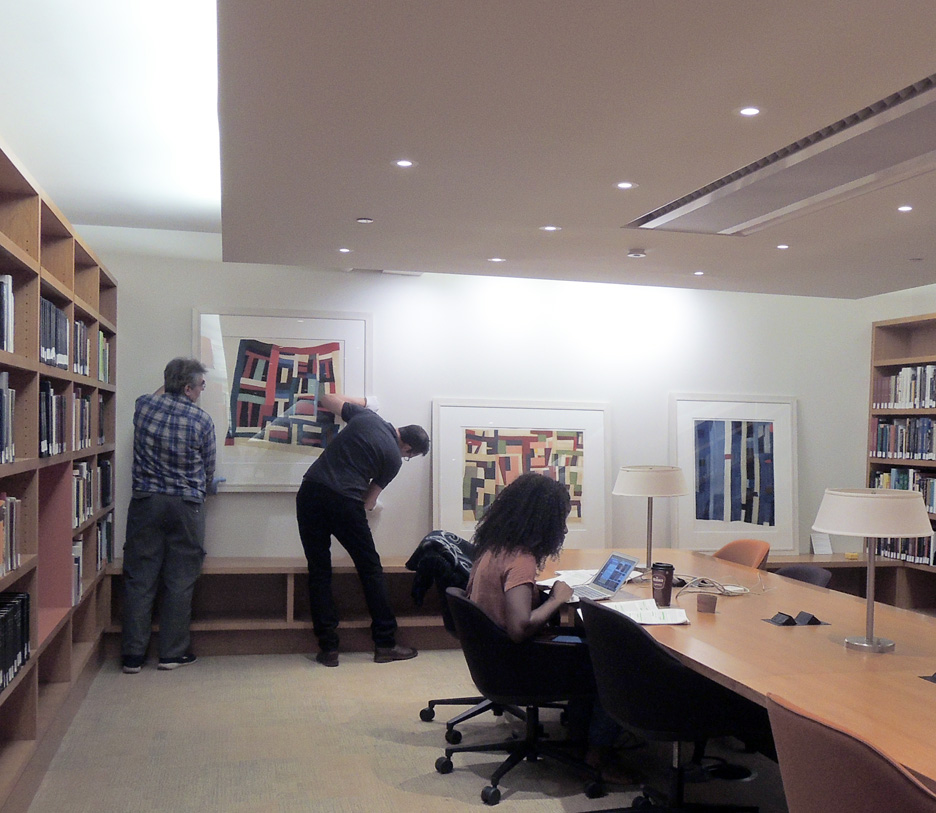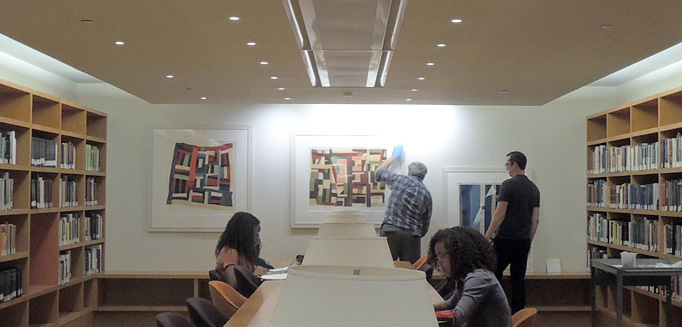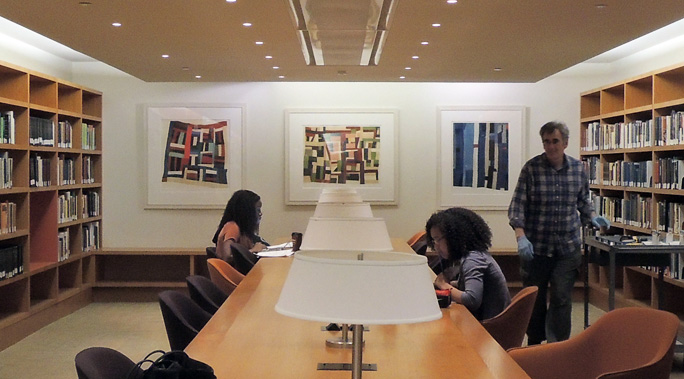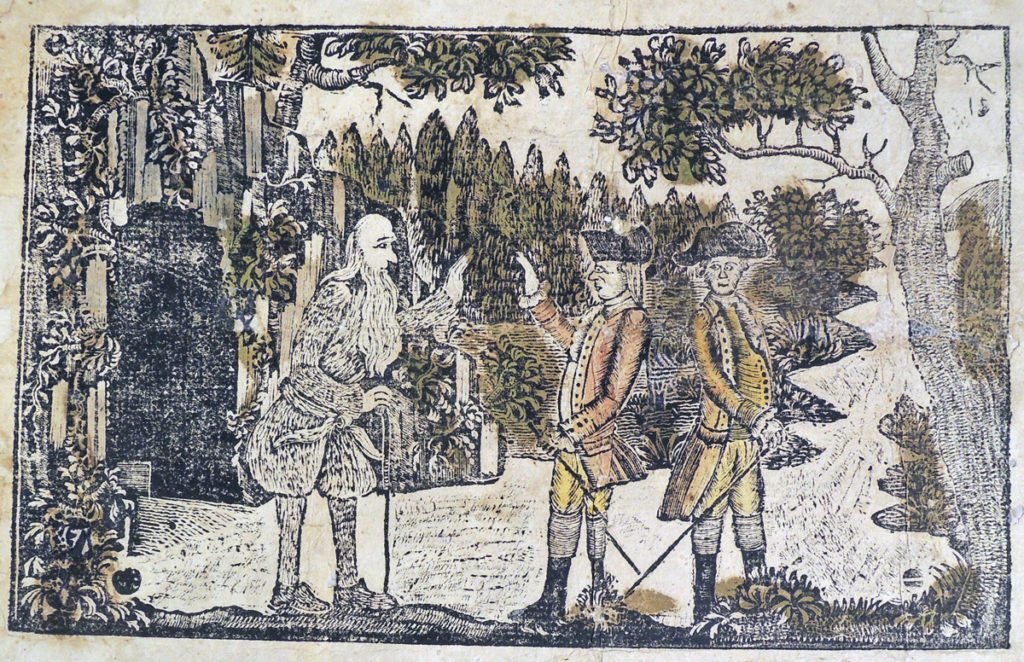 A Wonderful Discovery of a Hermit Who Lived Upwards of 200 Years ([United States: s.n., 1786?]). Broadside with hand colored woodcut. Sinclair Hamilton Collection of American Illustrated Books. Graphic Arts Collection (GAX) Hamilton 110
A Wonderful Discovery of a Hermit Who Lived Upwards of 200 Years ([United States: s.n., 1786?]). Broadside with hand colored woodcut. Sinclair Hamilton Collection of American Illustrated Books. Graphic Arts Collection (GAX) Hamilton 110
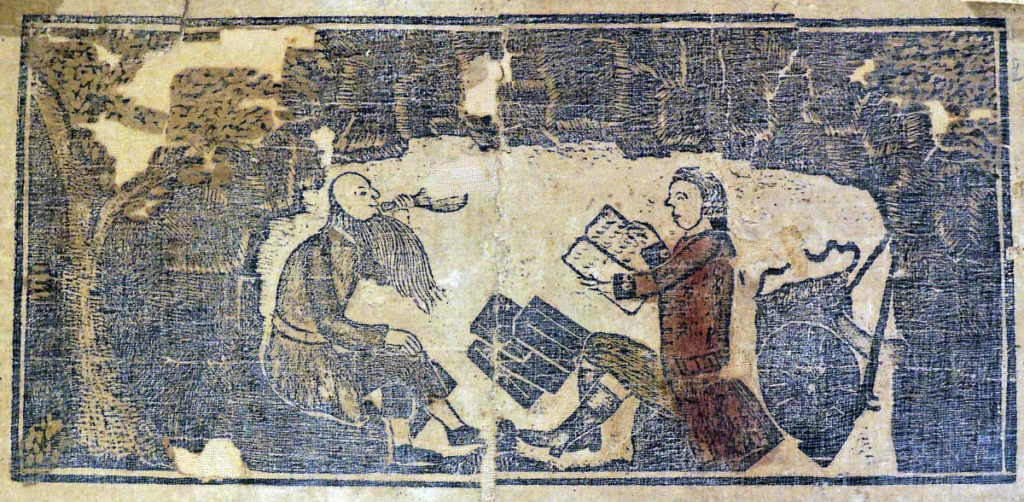 An Account of the Wonderful Old Hermit’s Death, and Burial ([Boston?: Printed by Ezekiel Russell?, 1787?]). Broadside with hand colored woodcut. Sinclair Hamilton Collection of American Illustrated Books. Graphic Arts Collection (GAX) Hamilton 111
An Account of the Wonderful Old Hermit’s Death, and Burial ([Boston?: Printed by Ezekiel Russell?, 1787?]). Broadside with hand colored woodcut. Sinclair Hamilton Collection of American Illustrated Books. Graphic Arts Collection (GAX) Hamilton 111
The Sinclair Hamilton collection holds two broadsides concerning a hermit “who lived upwards of 200 years.” In the first, the hermit (who told everything but his name) was discovered in 1785 by “two Virginia gentlemen, Captain James Buckland and Mr. John Fielding.” The second describes a visit in 1786 by Dr. Samuel Brake, who offered the hermit a drink of rum, his first drink of alcohol and shortly after, the hermit died. “A deplorable ending to a man who had lived 200 years without liquor and might have lived 200 years more had he not drank that horrid draught!”
The text in each of the broadsides was also published in small booklets, which sold well.
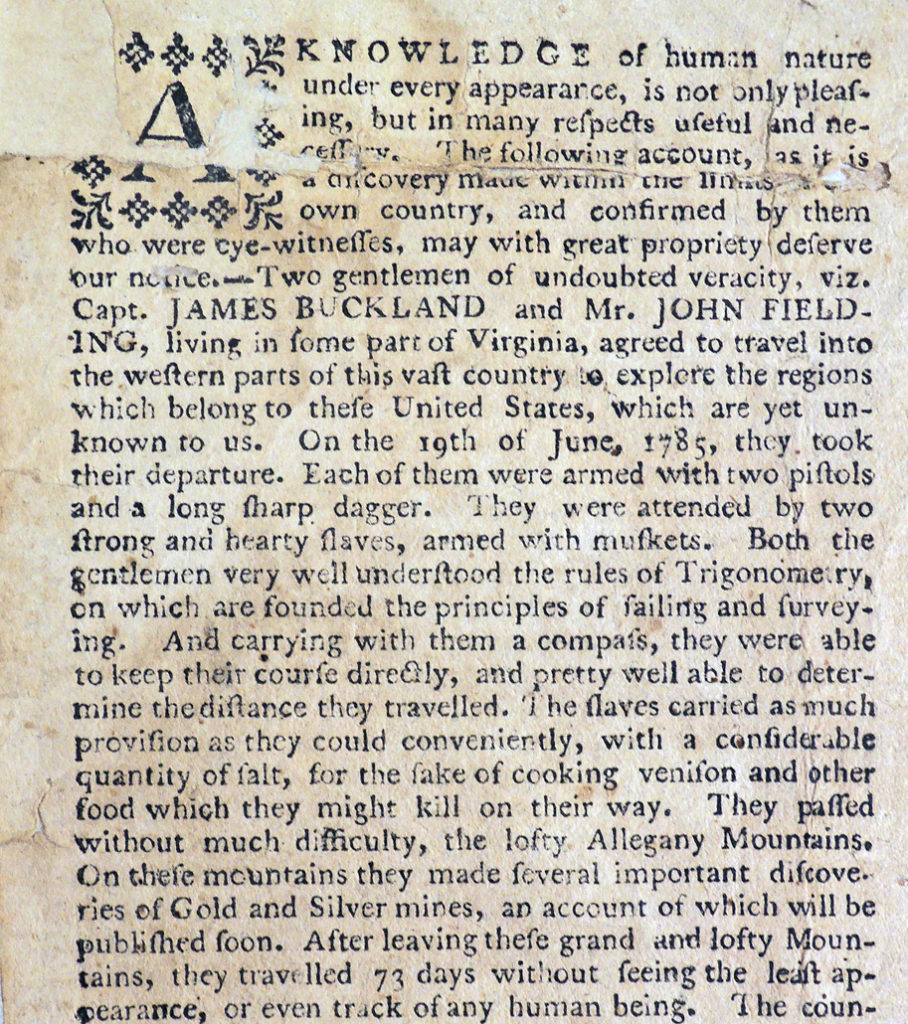 “Probably the best domestic seller of 1786 was James Buckland’s An Account of the Discovery of a Hermit, Who Lived about 200 Years in a Cave at the Foot of a Hill, 73 Days Journey Westward of the Great [Allegheny] Mountains, which appeared in that year at [Pittsburgh], Portsmouth, Middletown, New Haven, Norwich, and Boston, and which went through several myth-adding editions in the next few years.”
“Probably the best domestic seller of 1786 was James Buckland’s An Account of the Discovery of a Hermit, Who Lived about 200 Years in a Cave at the Foot of a Hill, 73 Days Journey Westward of the Great [Allegheny] Mountains, which appeared in that year at [Pittsburgh], Portsmouth, Middletown, New Haven, Norwich, and Boston, and which went through several myth-adding editions in the next few years.”
“Its vogue is noted here merely to emphasize the fact that the American public was becoming prepared for that literary enfranchisement noticeable in the last years of the eighteenth century.” –Earl L. Bradsher, The Cambridge History of American Literature: Later National Literature: pt. II (G.P. Putnam’s Sons, 1921).
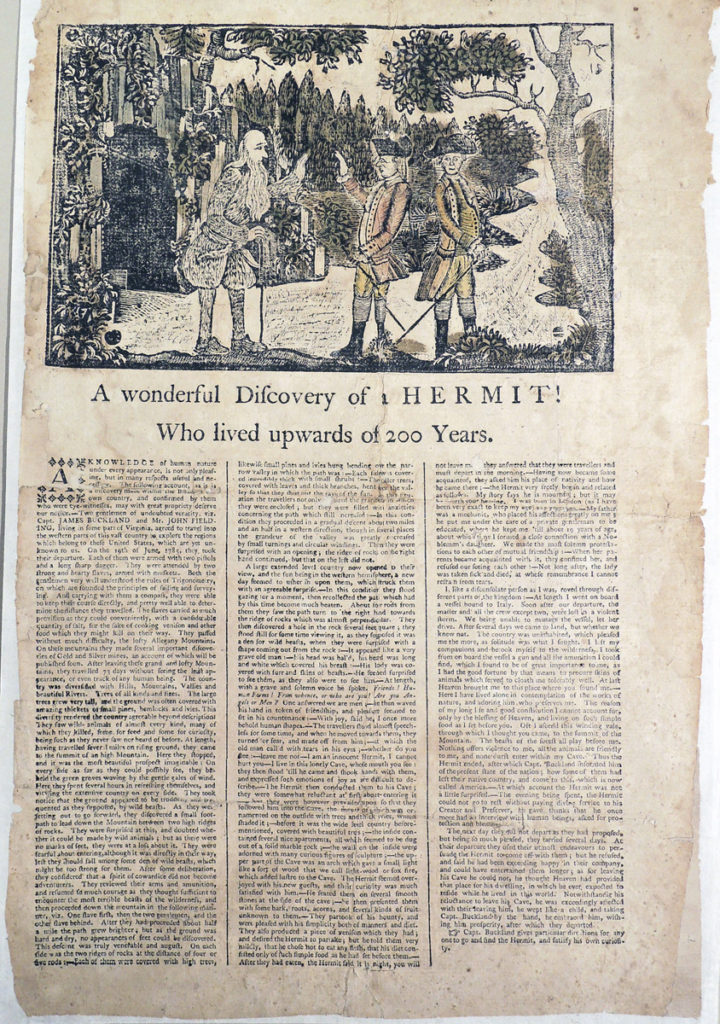
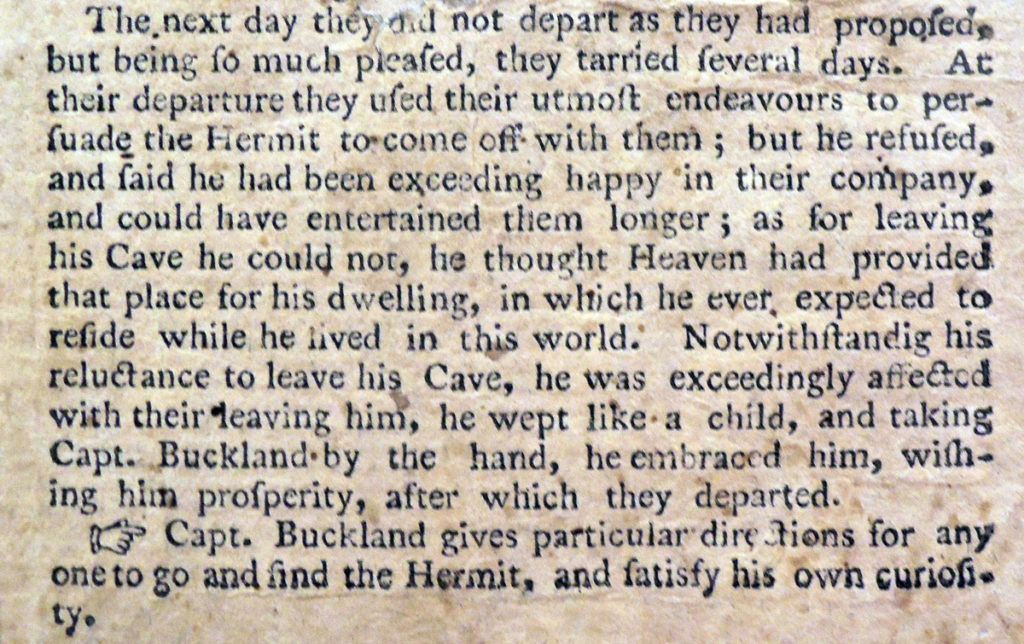
“The next day they did not depart as they had proposed, but being so much pleased, they tarried several days. At their departure they used their utmost endeavours to persuade the Hermit to come off with them; but he refused, and said he had been exceeding happy in their company, and could have entertained them longer; as for leaving his Cave he could not, he thought Heaven had provided that place for his dwelling, in which he ever expected to reside while he lived in this world. Notwithstanding his reluctance to leave his Cave, he was exceedingly affected with their leaving him, he wept like a child, and taking Capt Buckland by the hand, he embraced him, wishing him prosperity, after which they departed.”
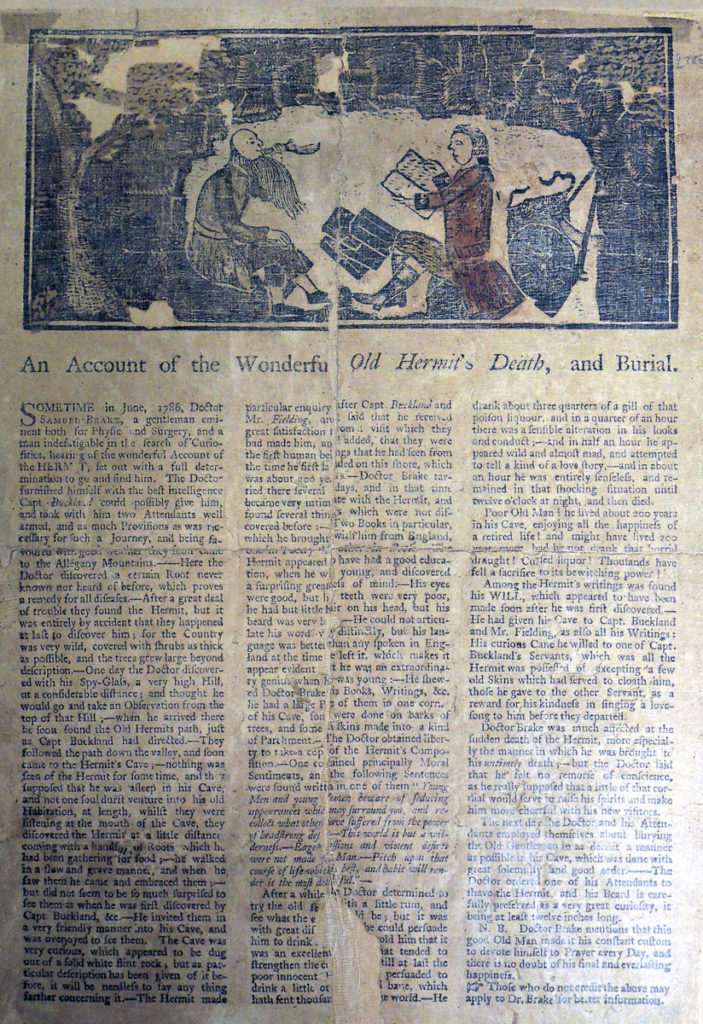
In American Bibliography: 1786-1789 (1912), Charles Evans lists the following works by James Buckland:
19527 — An Account of the Discovery of a Hermit, Who Lived about 200 Years in a Cave, at the Foot of a Hill, 73 Days Journey Westward of the Great [Allegheny] Mountains Written By James Buckland And John Fielding, The Persons Who Discovered Him. [Pittsburgh]: Printed by John Scott and Joseph Hall, 1786.
19528 — The Remarkable Discovery of an American Hermit, Who Lived Upwards of 220 Years. Portsmouth: Printed and sold by George Jerry Osborne. 1786.
19529 — A Surprizing Account of an Old Hermit Lately Discovered in America; To Which Is Added, an Elegant Engraved Typographical Plate, Containing the Hermit, and the Travellers who Discovered Him… Middletown: Printed and sold by Woodward and Green. 1786.
19530 — A Surprizing Account of an Old Hermit, Lately Discovered in America. With an Elegant Engraved Typographical Plate, Containing the Hermit and the Travellers Who Discovered Him. New-Haven: Printed by Daniel Bowen. 1786.
19531 — A Wonderful Discovery of an Old Hermit, Who Lived Upwards of Two Hundred Years. [Ornament.] Norwich: Printed by John Trumbull, M.DCC.LXXXVI.
19532 — A Wonderful Discovery of a Hermit! And a Most Remarkable Narrative of a Citizen of London, Who Left his Native Country on Account of Being Connected with a Nobleman’s Daughter, and Sailed in a Ship Bound for Italy . . . [Boston: Printed by Ezckiel Russell and] Sold at the Office near Liberty Pole, [1786].
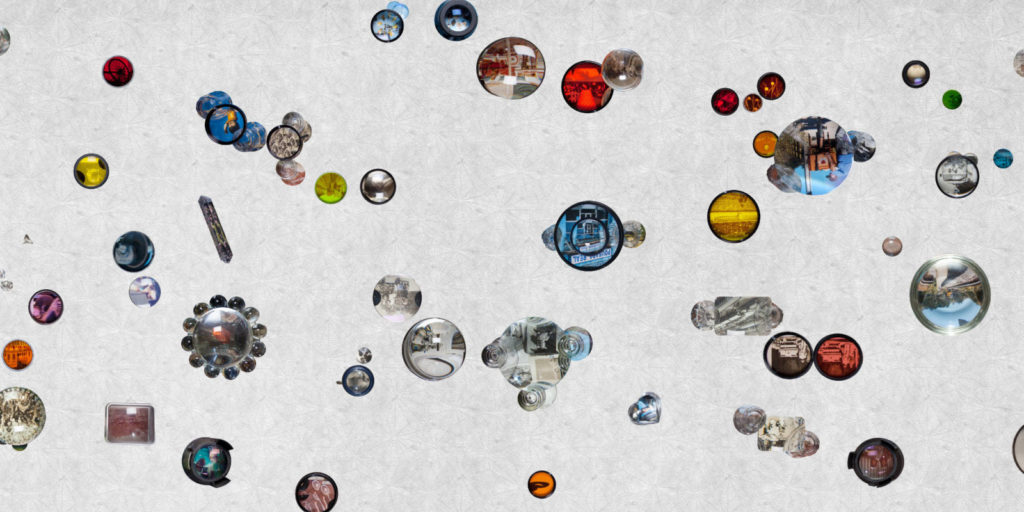 Latin American Studies and the Graphic Arts Collection are collaborating on the purchase of the limited edition publication La valija (The Valise), which was unveiled Tuesday night at the Museum of Modern Art. The collective artists’ project unites seven South American artists—Johanna Calle (Bogotá, Colombia), Matías Duville (Buenos Aires, Argentina), Maria Laet (Rio de Janeiro, Brazil), Mateo López (Bogotá, Colombia), Nicolás Paris (Bogota, Colombia), Rosângela Rennó (Belo Horizonte, Brazil), and Christian Vinck Henriquez (Maracaibo, Venezuela)—with the Argentine writer César Aria.
Latin American Studies and the Graphic Arts Collection are collaborating on the purchase of the limited edition publication La valija (The Valise), which was unveiled Tuesday night at the Museum of Modern Art. The collective artists’ project unites seven South American artists—Johanna Calle (Bogotá, Colombia), Matías Duville (Buenos Aires, Argentina), Maria Laet (Rio de Janeiro, Brazil), Mateo López (Bogotá, Colombia), Nicolás Paris (Bogota, Colombia), Rosângela Rennó (Belo Horizonte, Brazil), and Christian Vinck Henriquez (Maracaibo, Venezuela)—with the Argentine writer César Aria.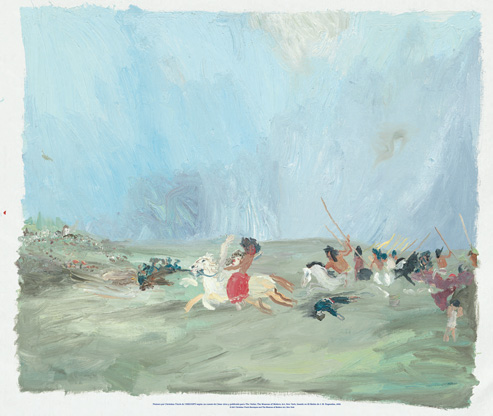 The artists created over 50 original artworks responding to Aria’s novel Un episodio en la vida del pintor viajero (An Episode in the Life of a Landscape Painter), which follows the German painter Johann Moritz Rugendas’s 1837 journey through South America.
The artists created over 50 original artworks responding to Aria’s novel Un episodio en la vida del pintor viajero (An Episode in the Life of a Landscape Painter), which follows the German painter Johann Moritz Rugendas’s 1837 journey through South America.

